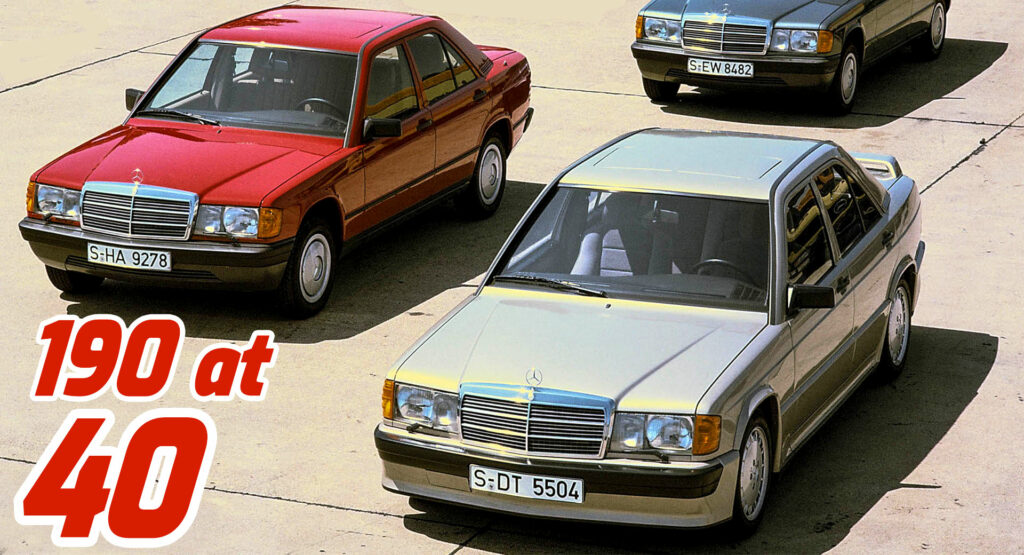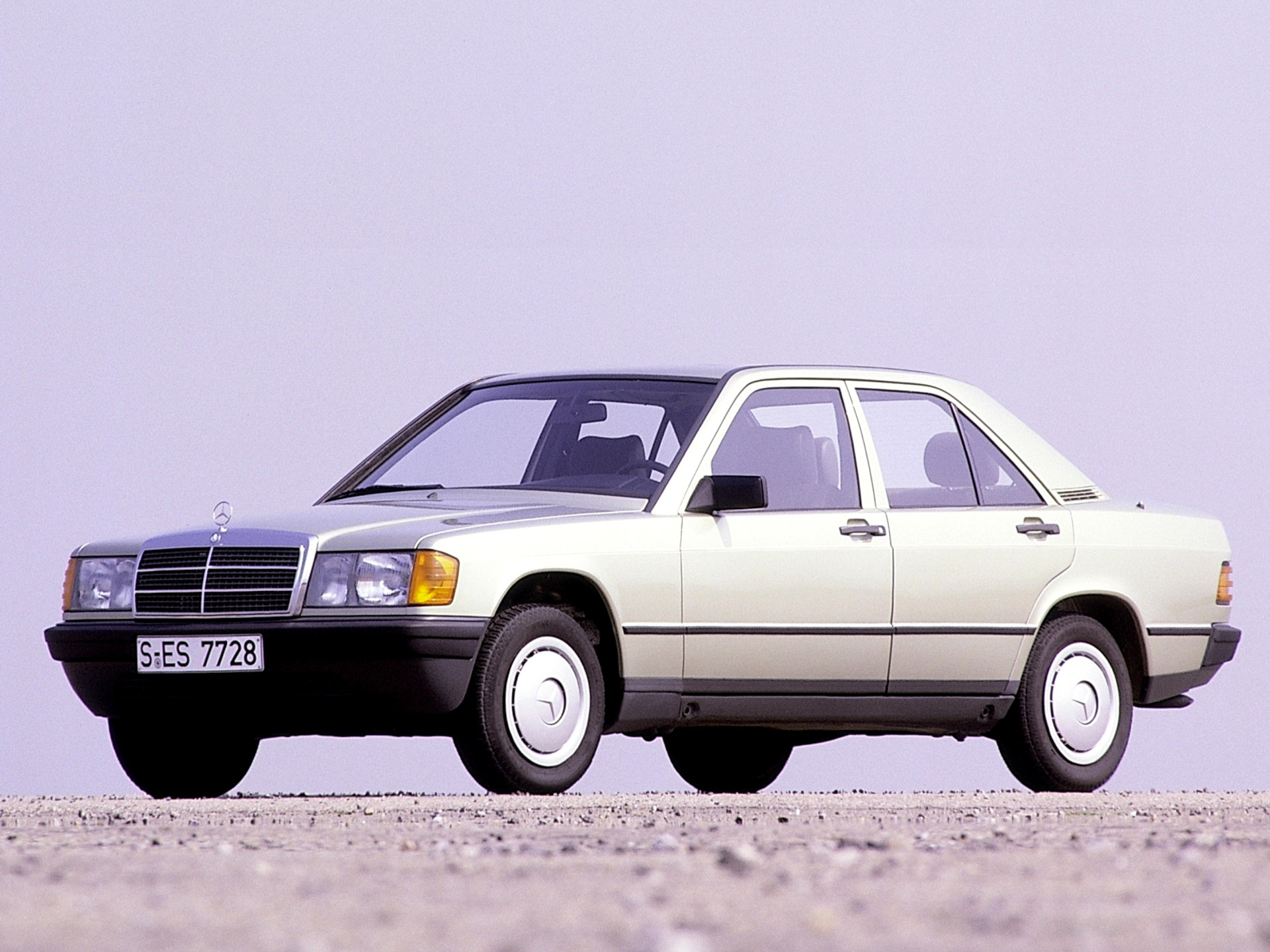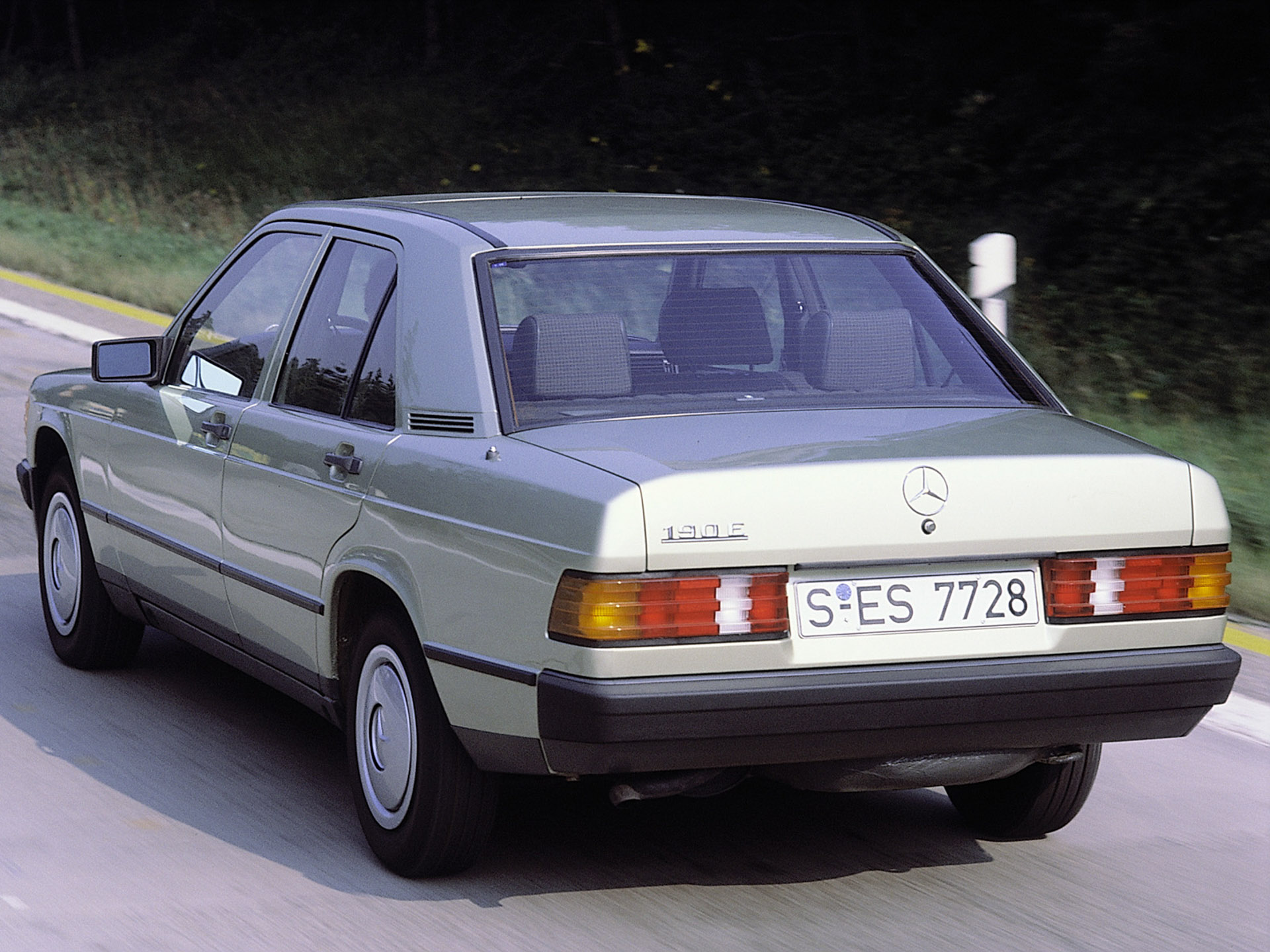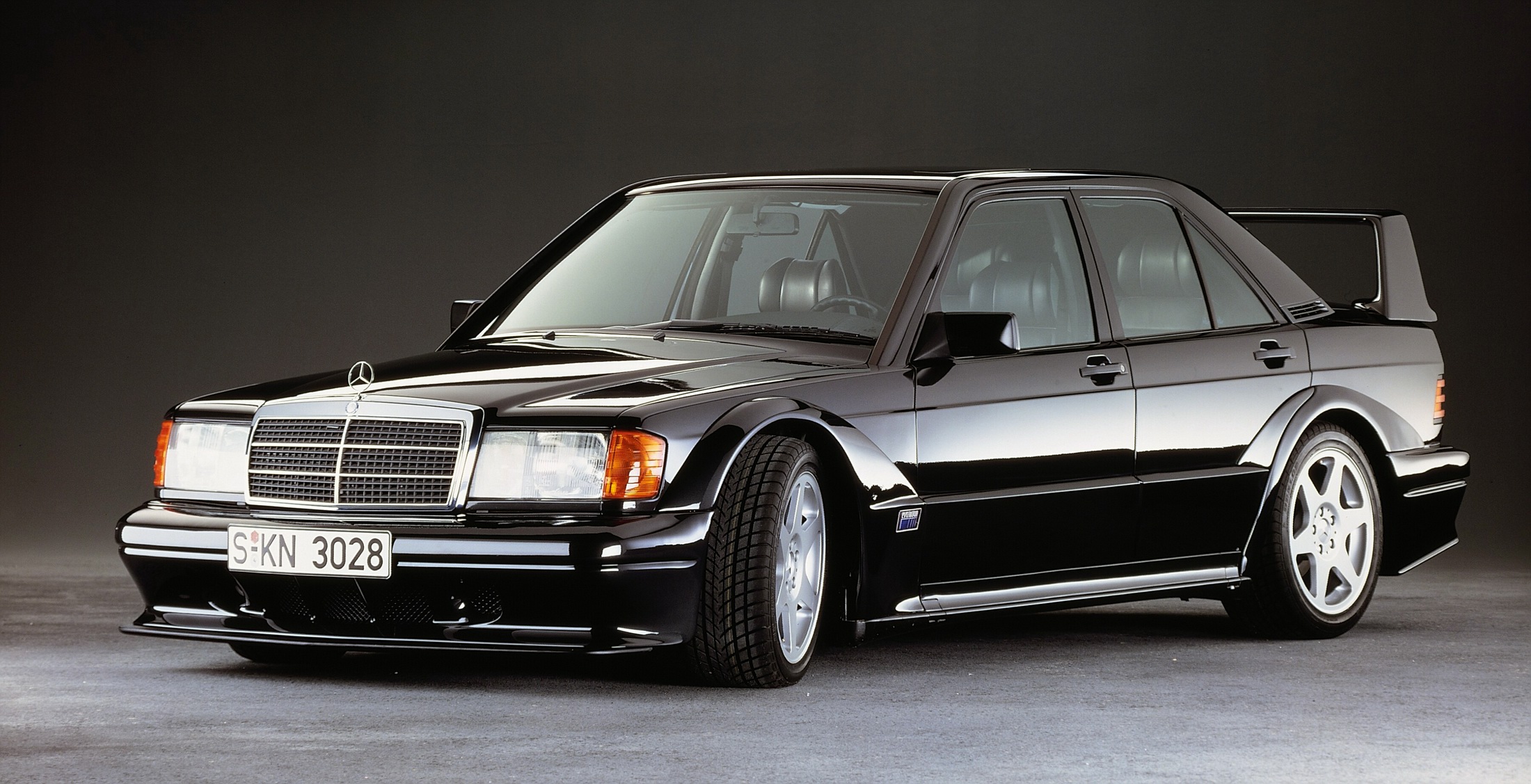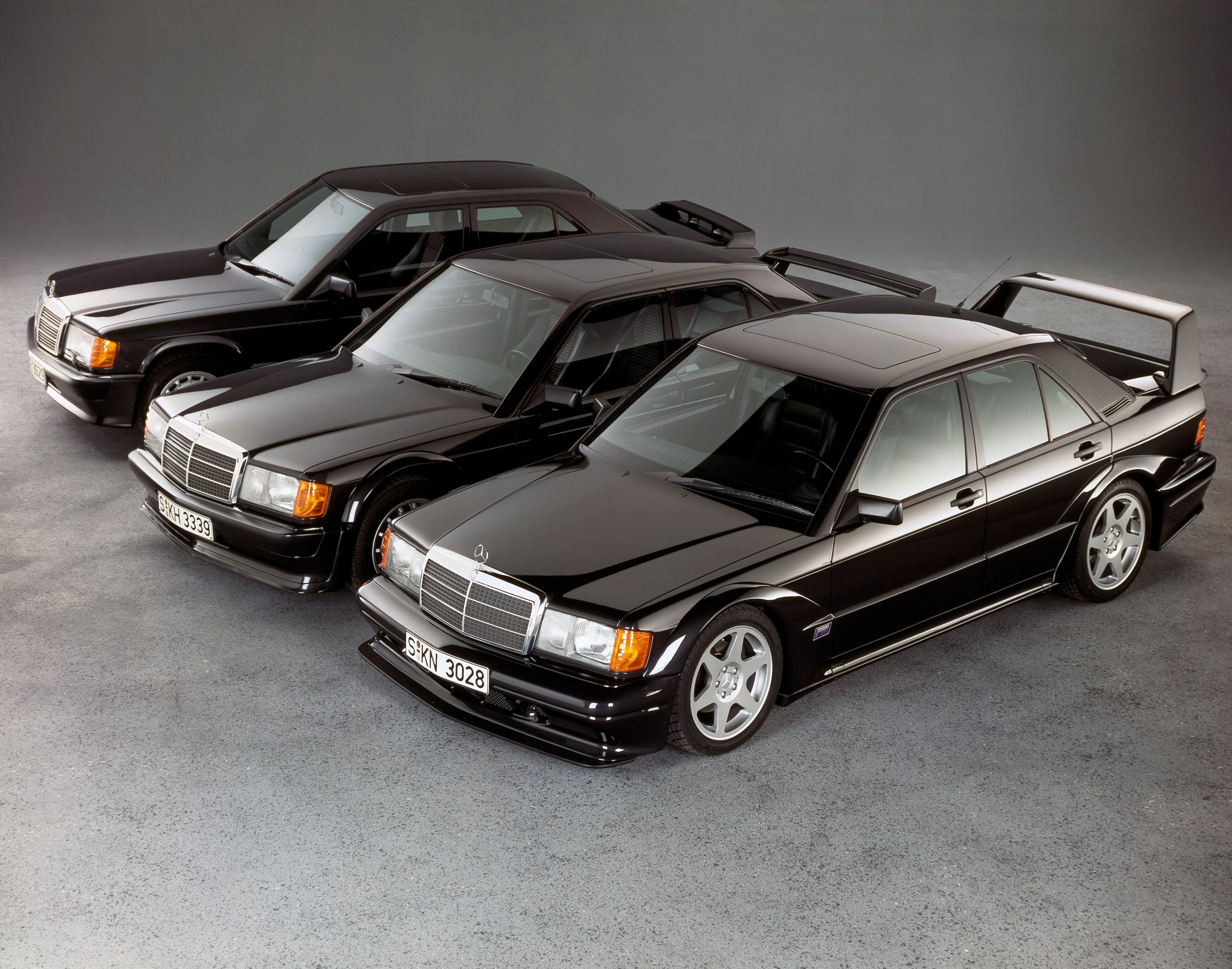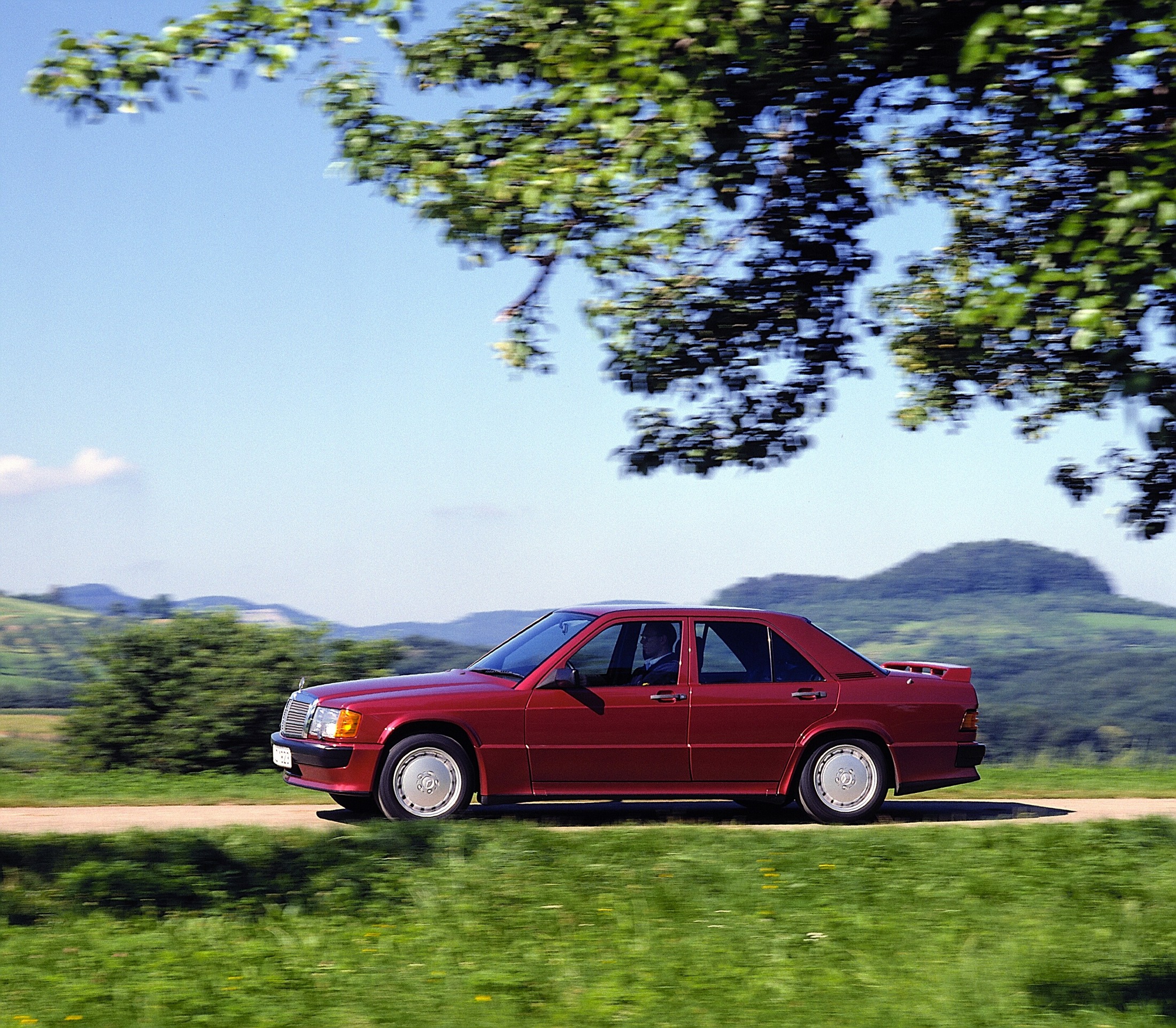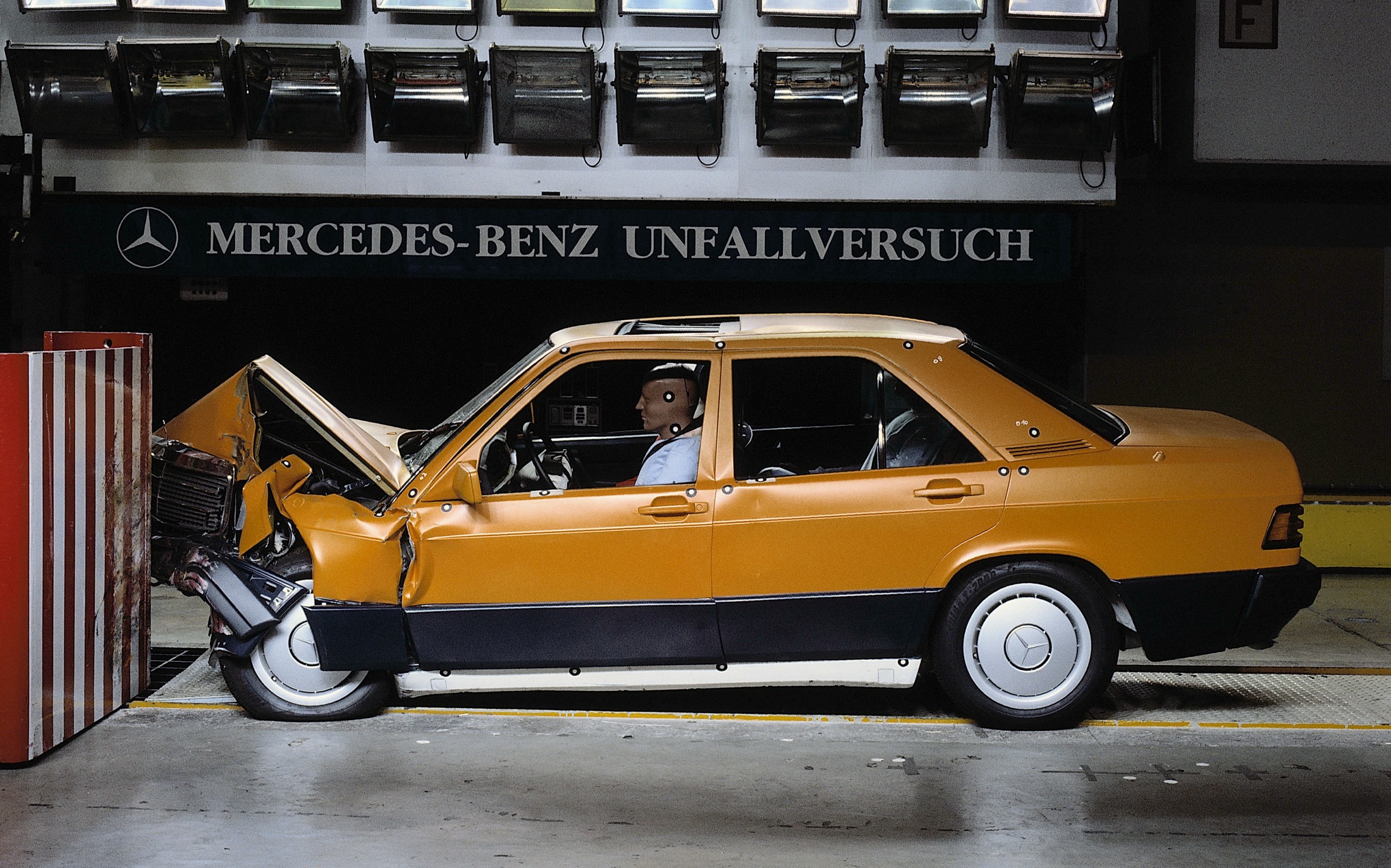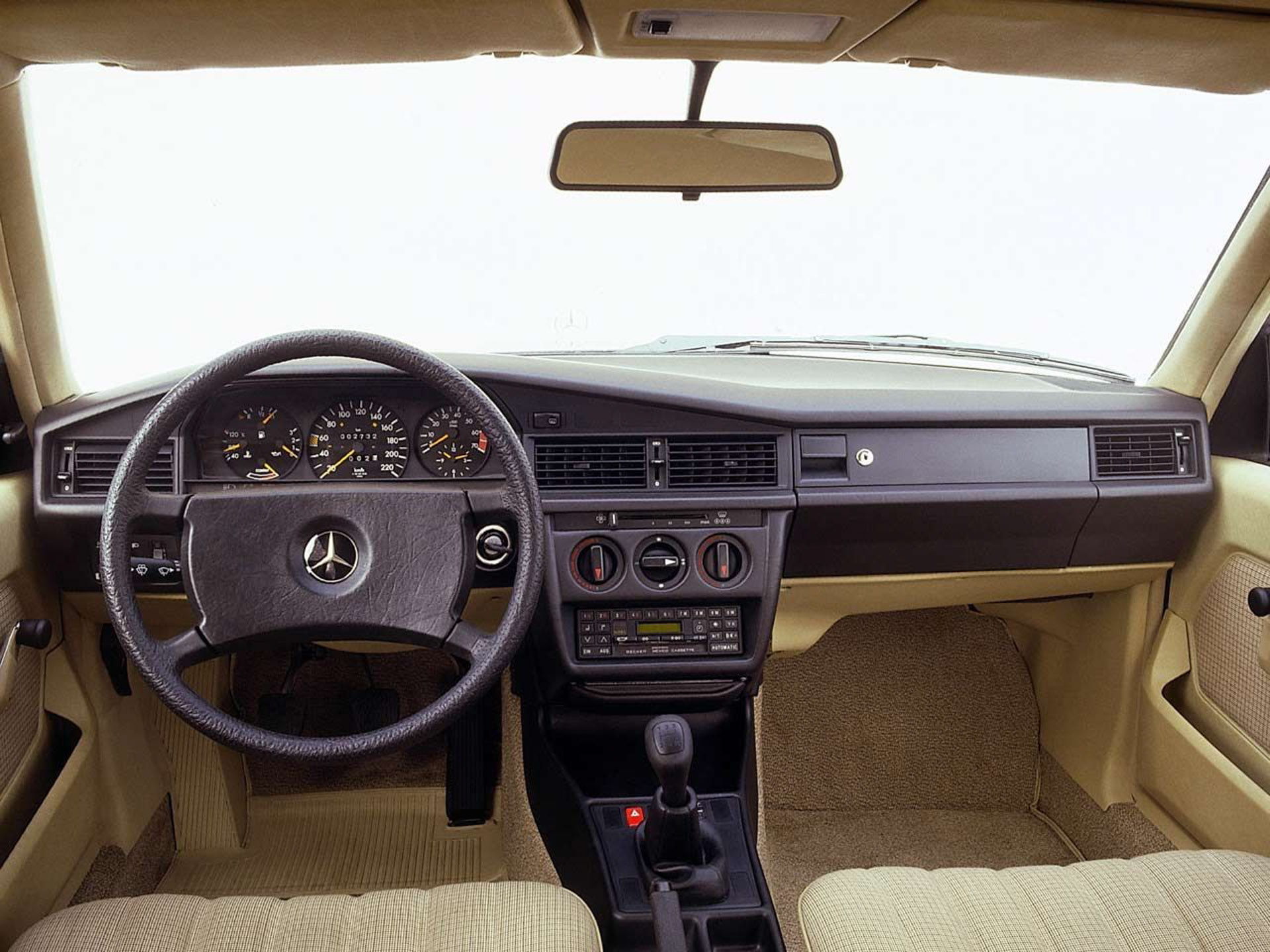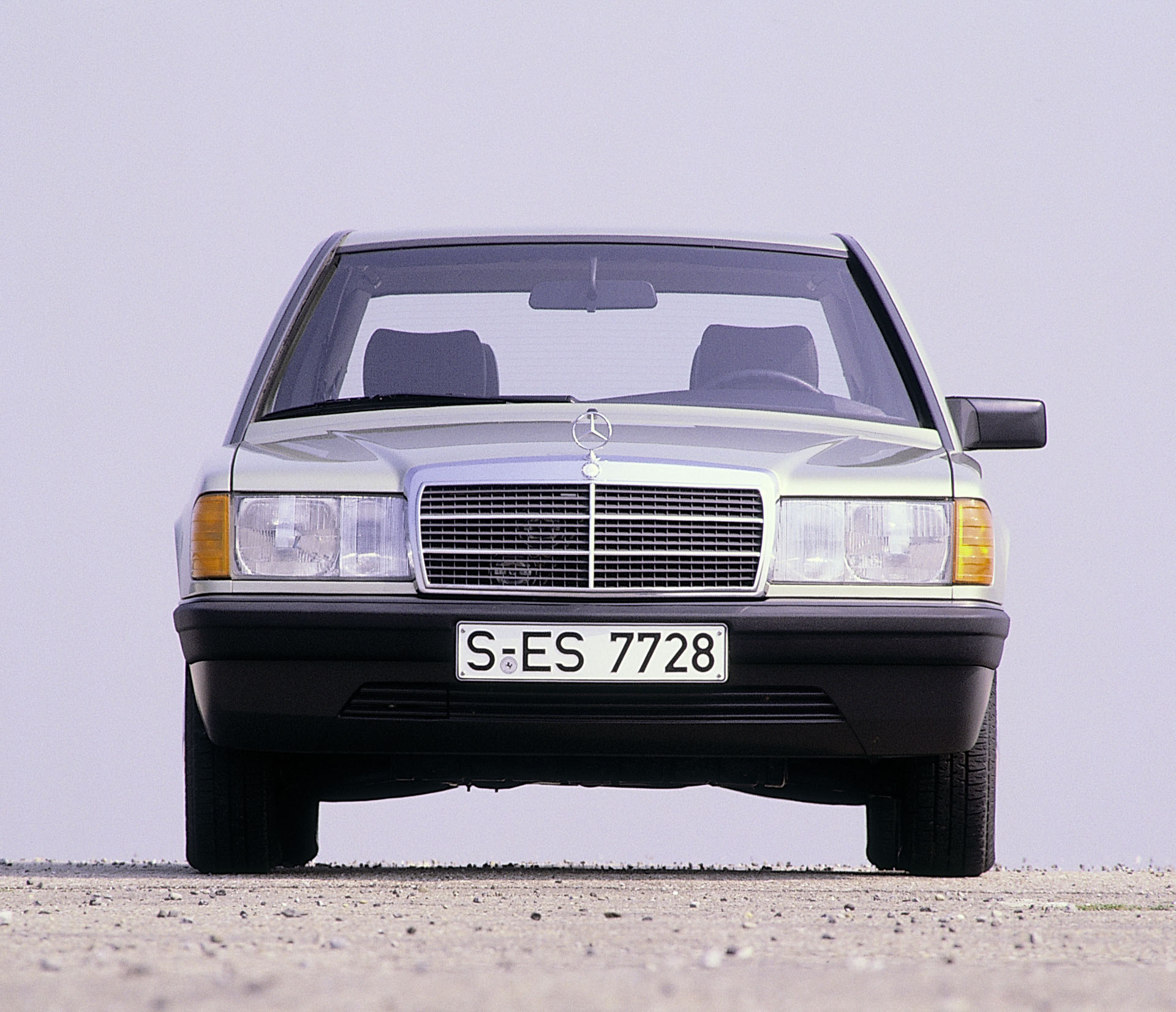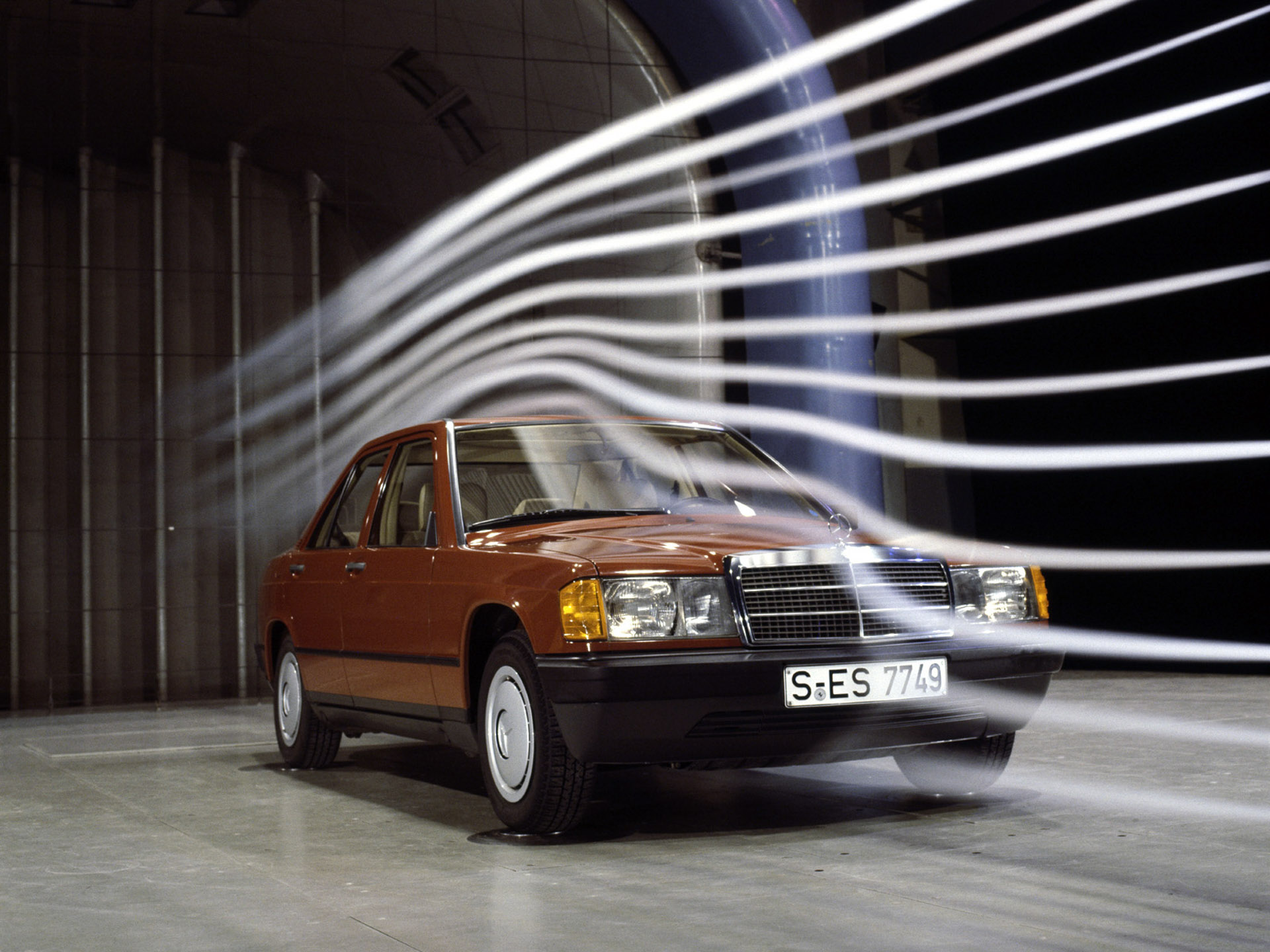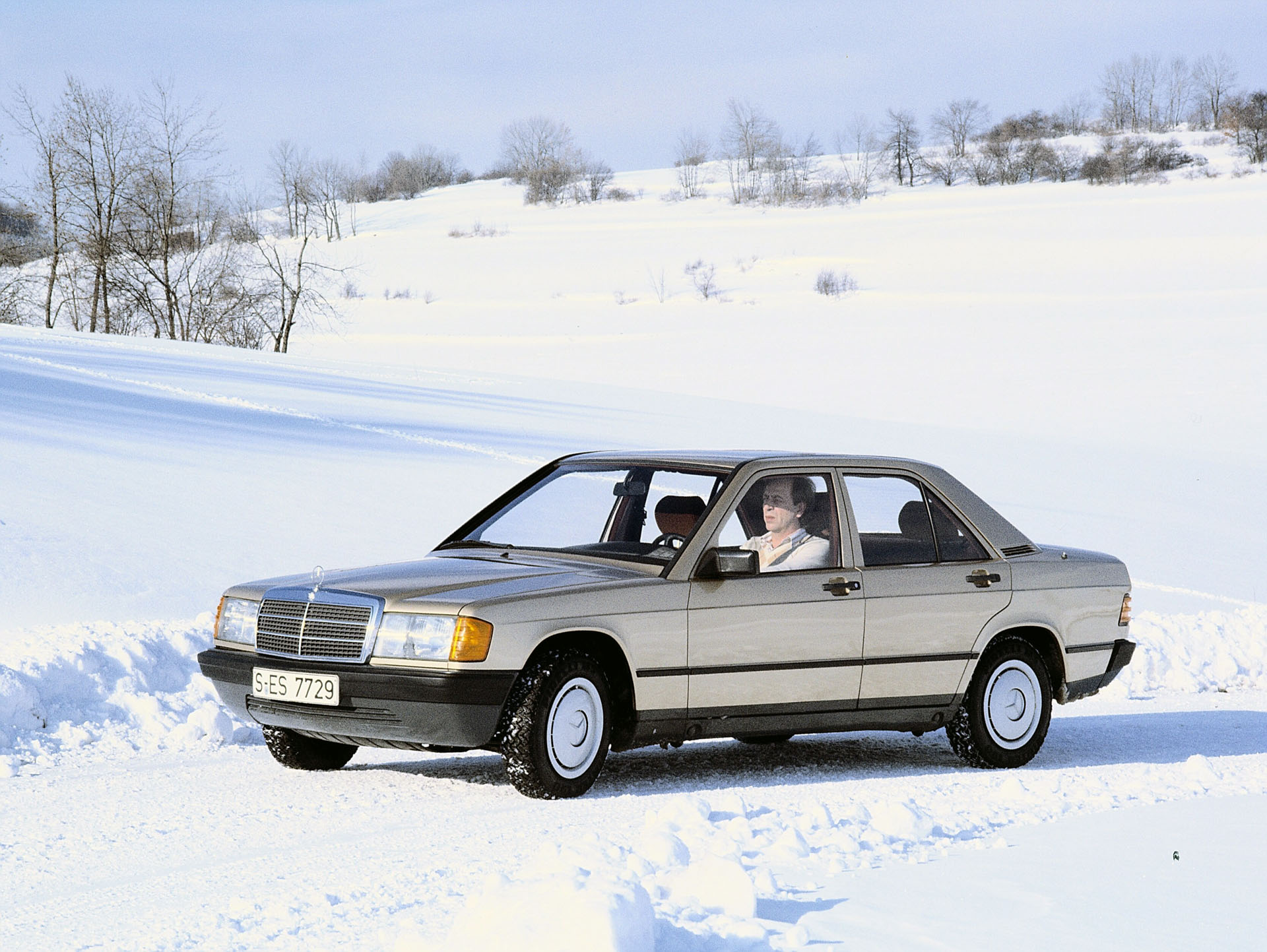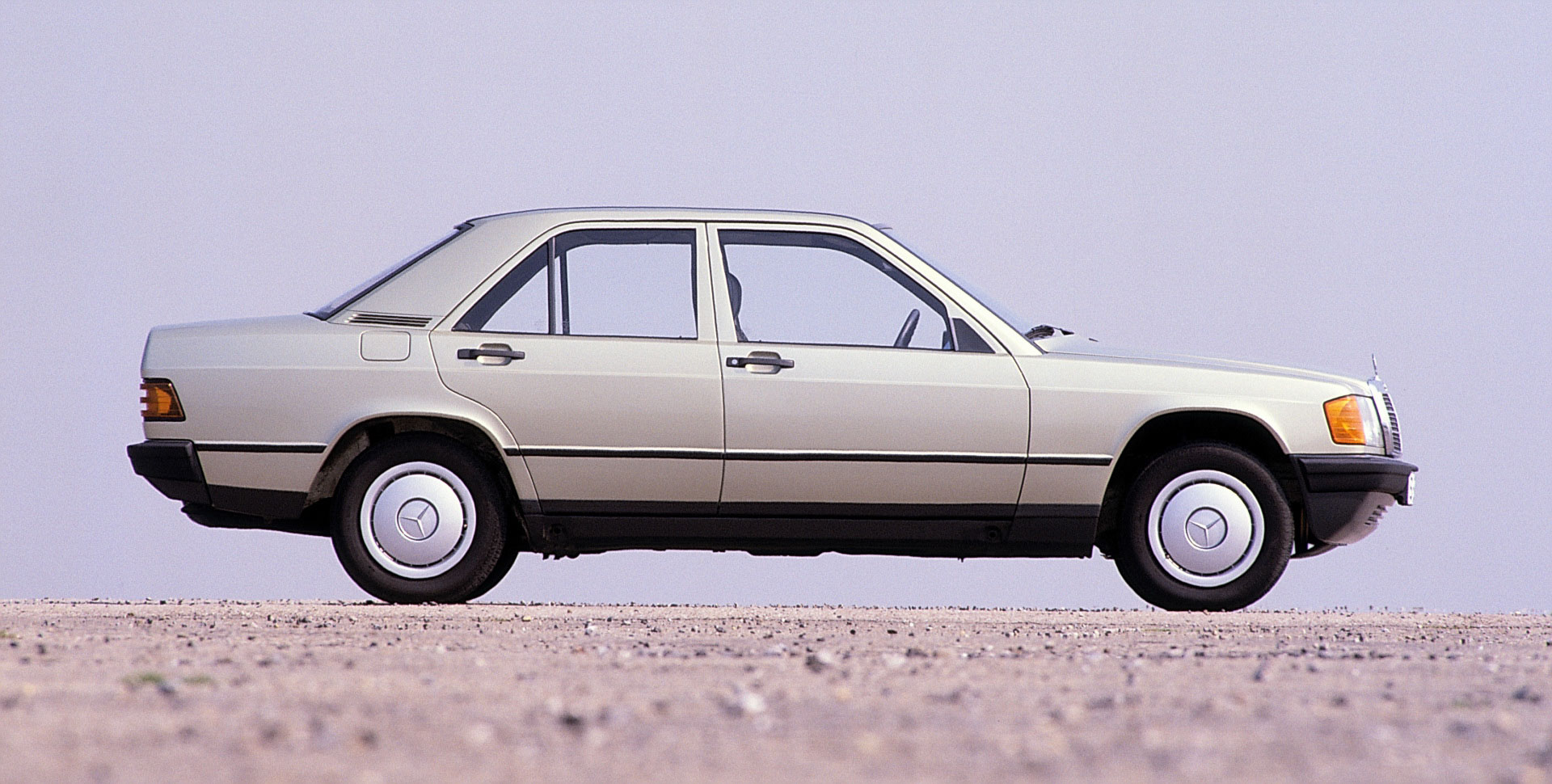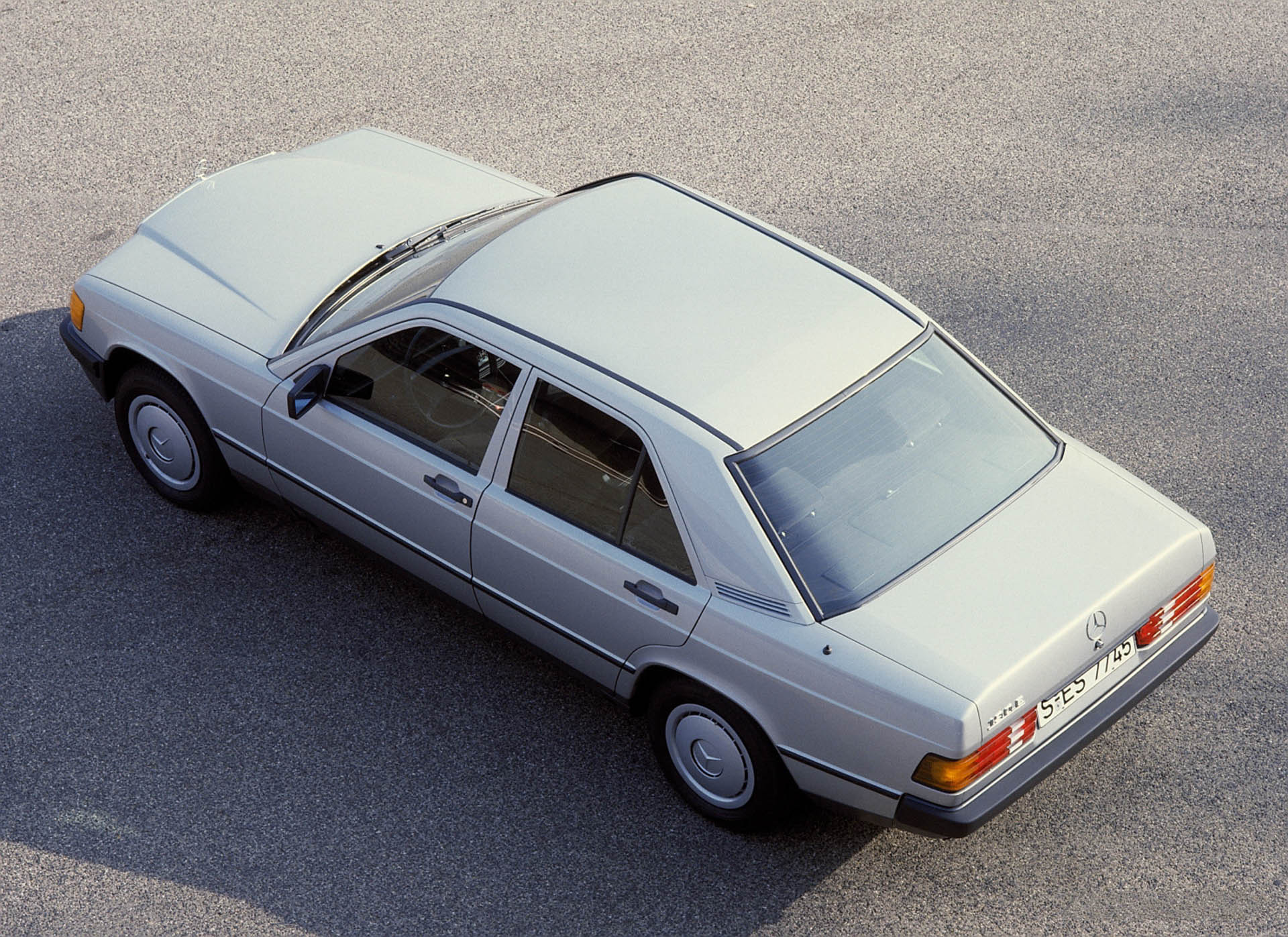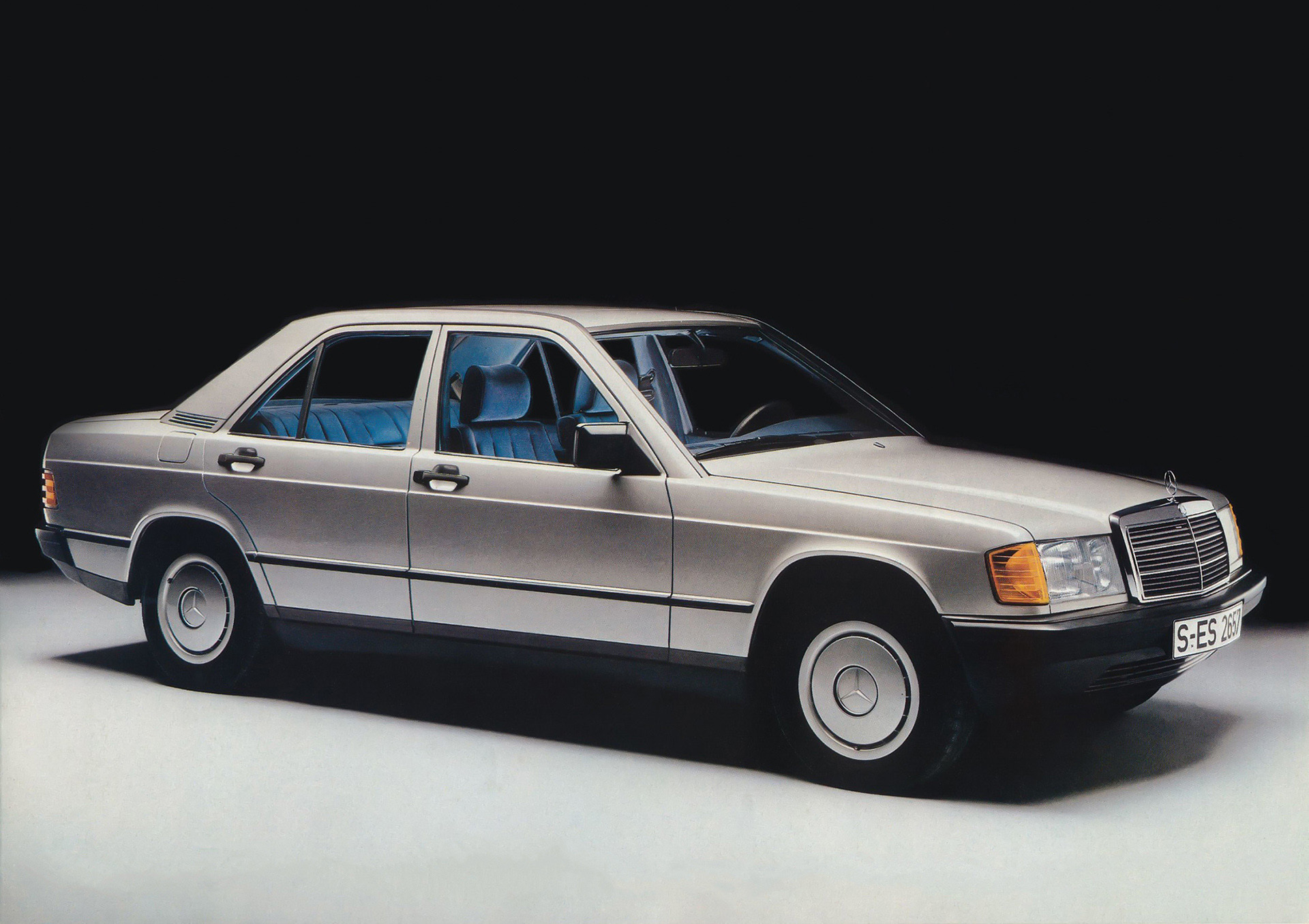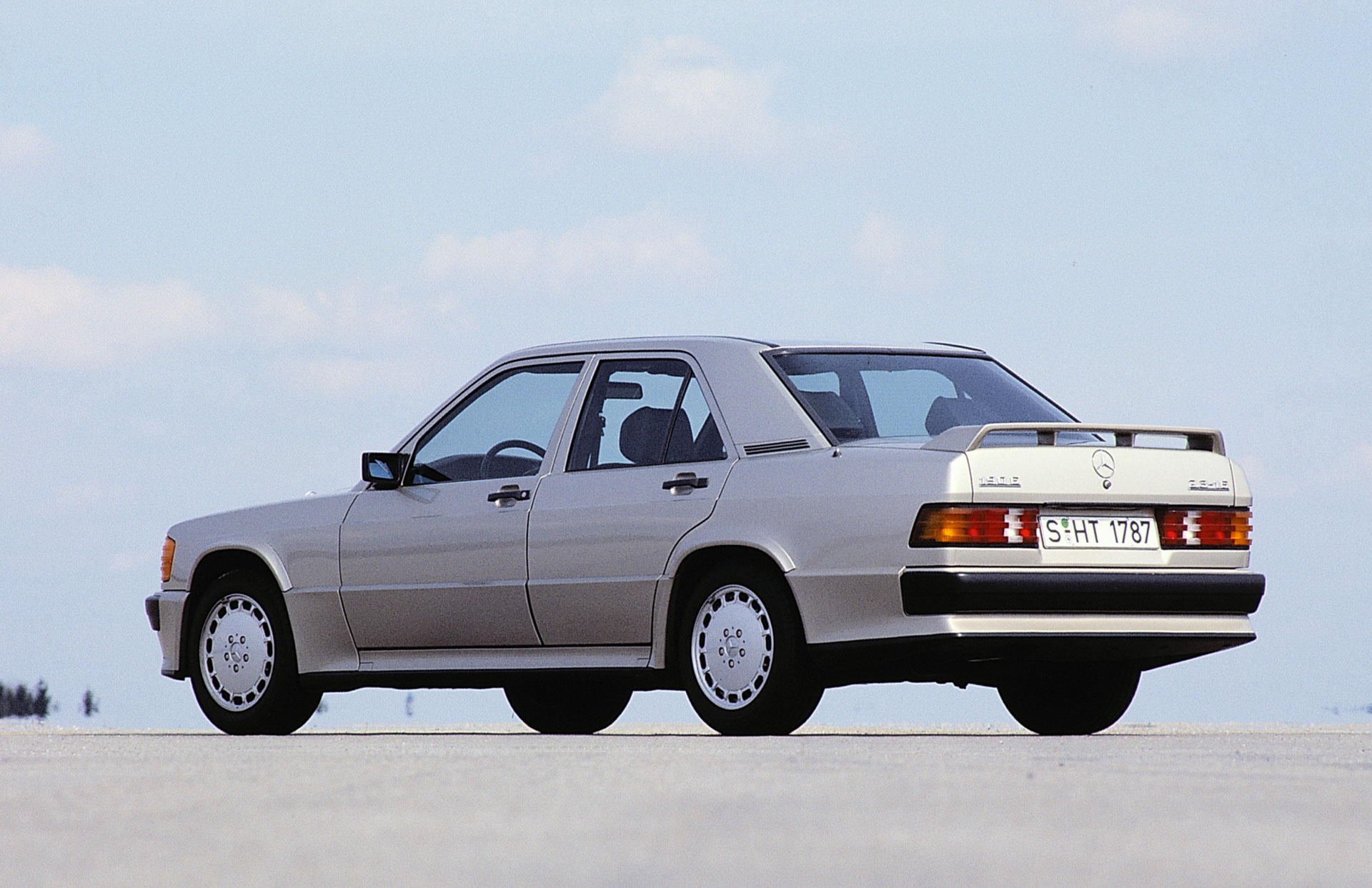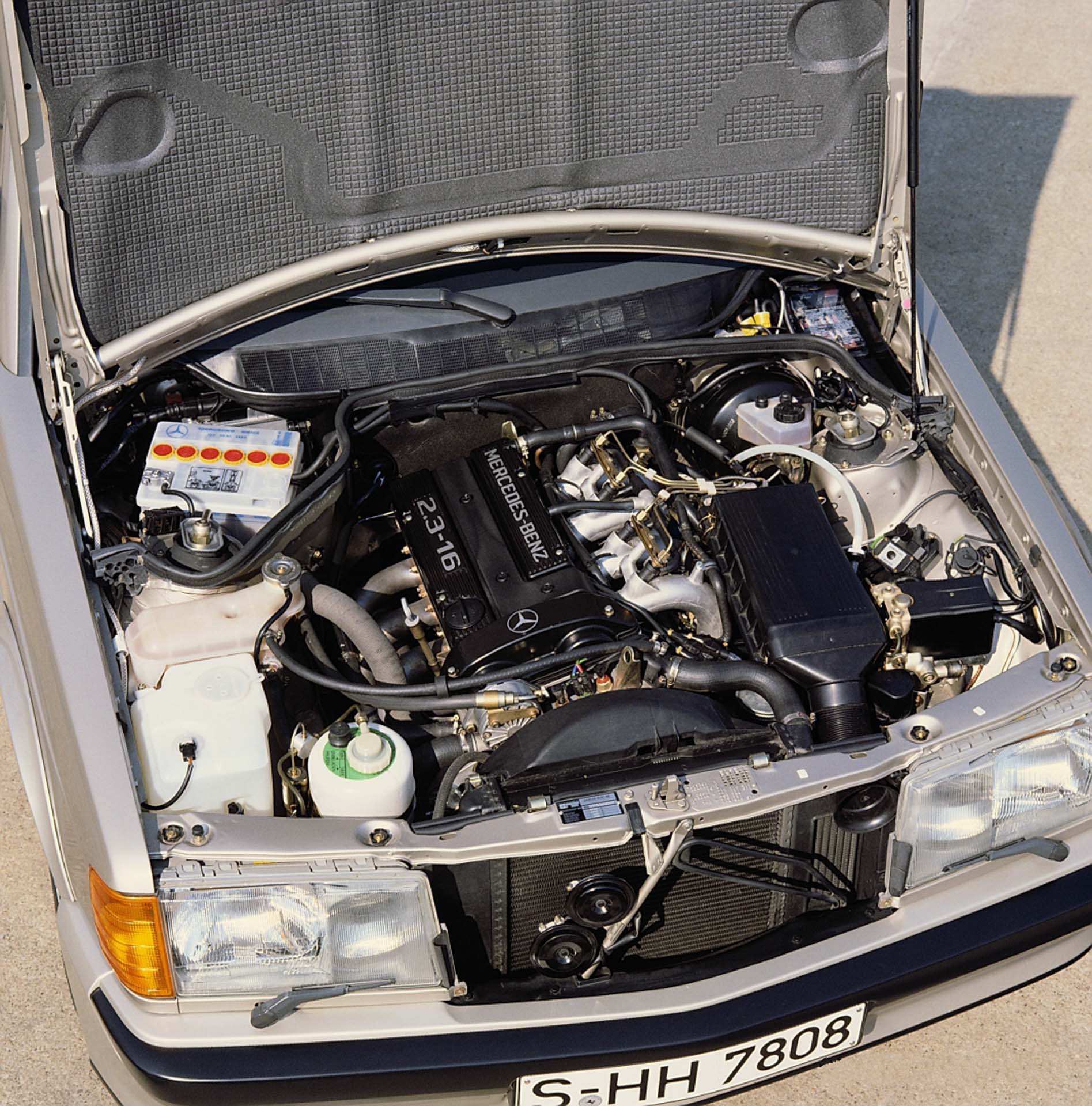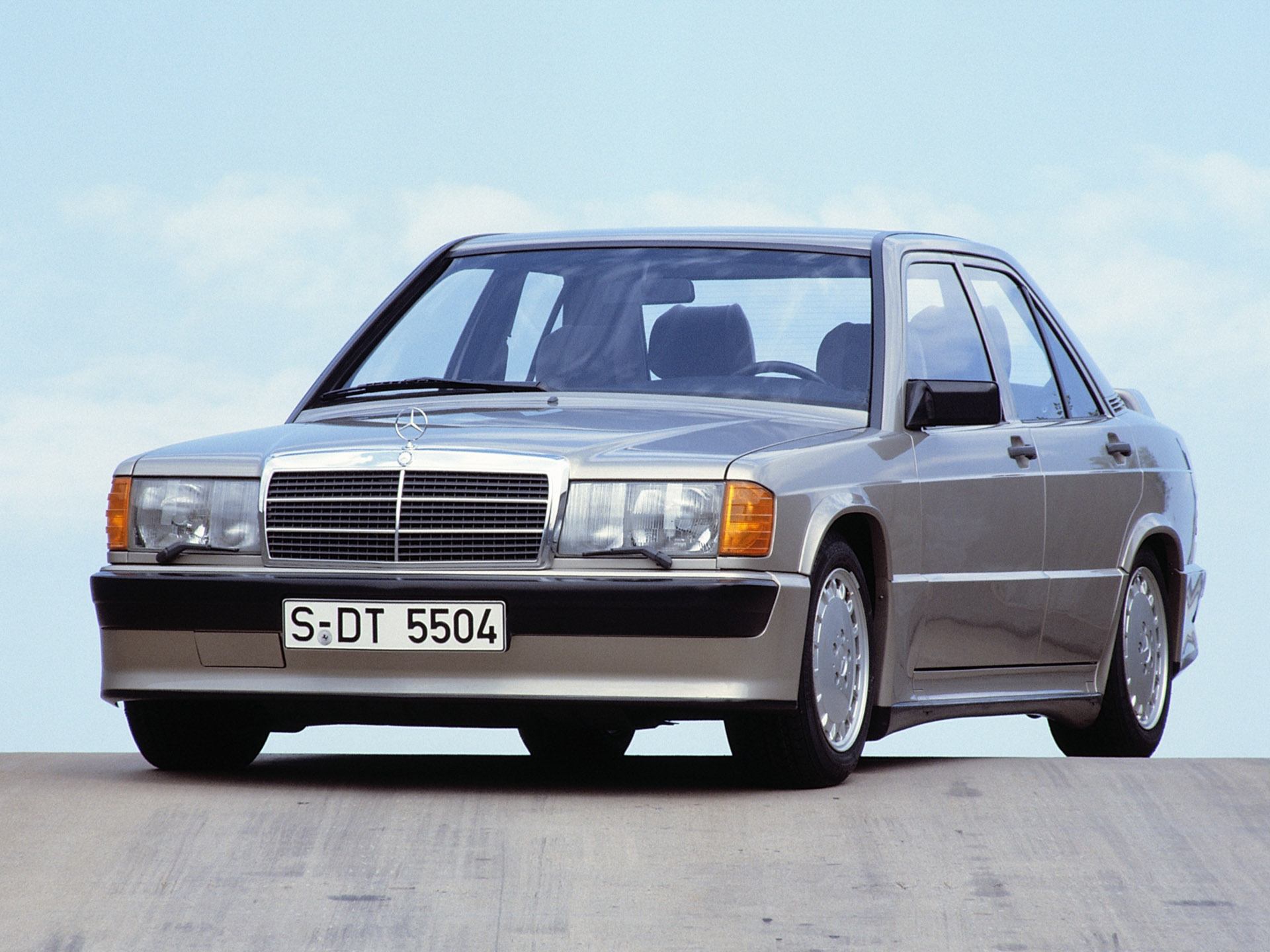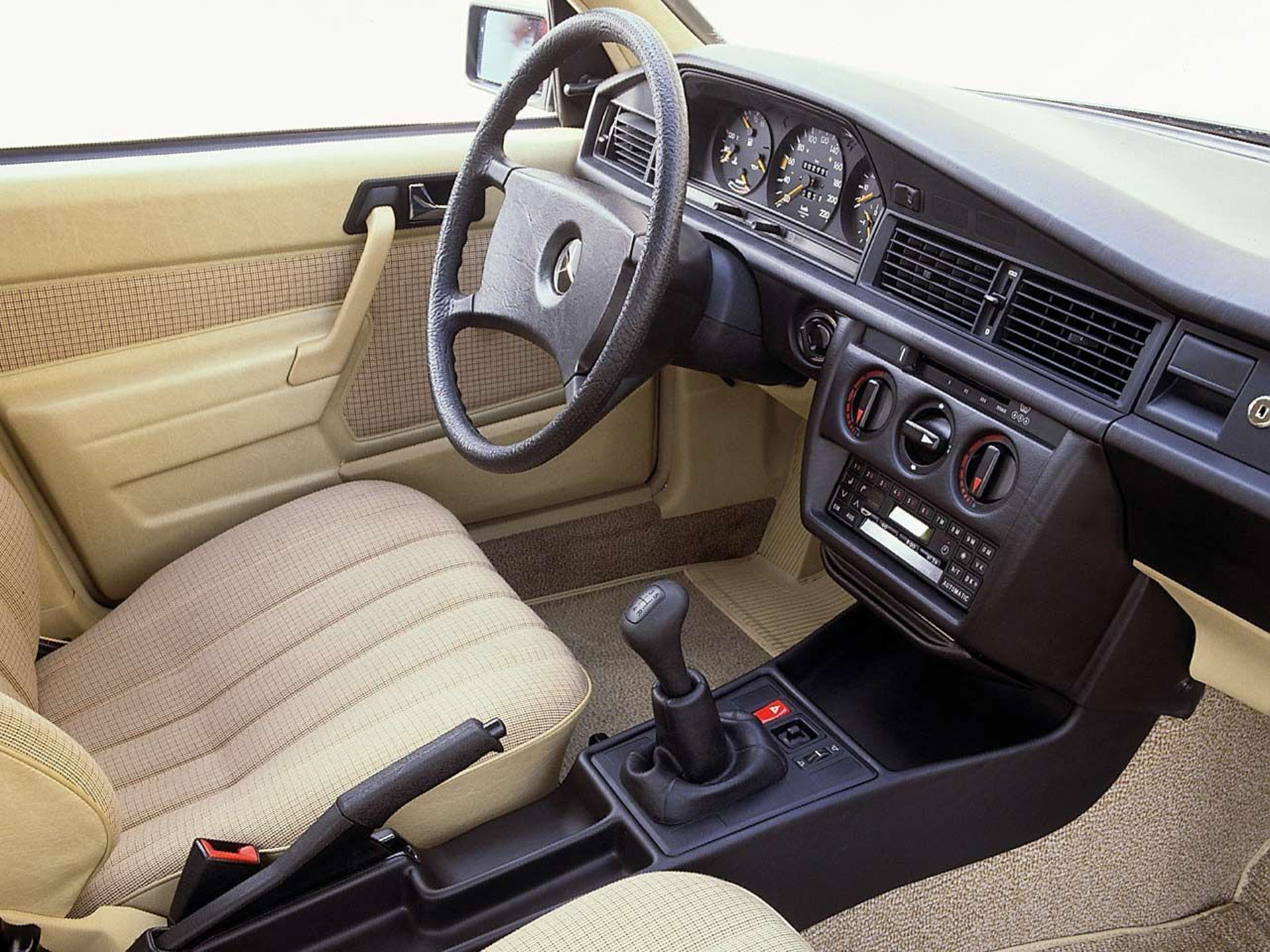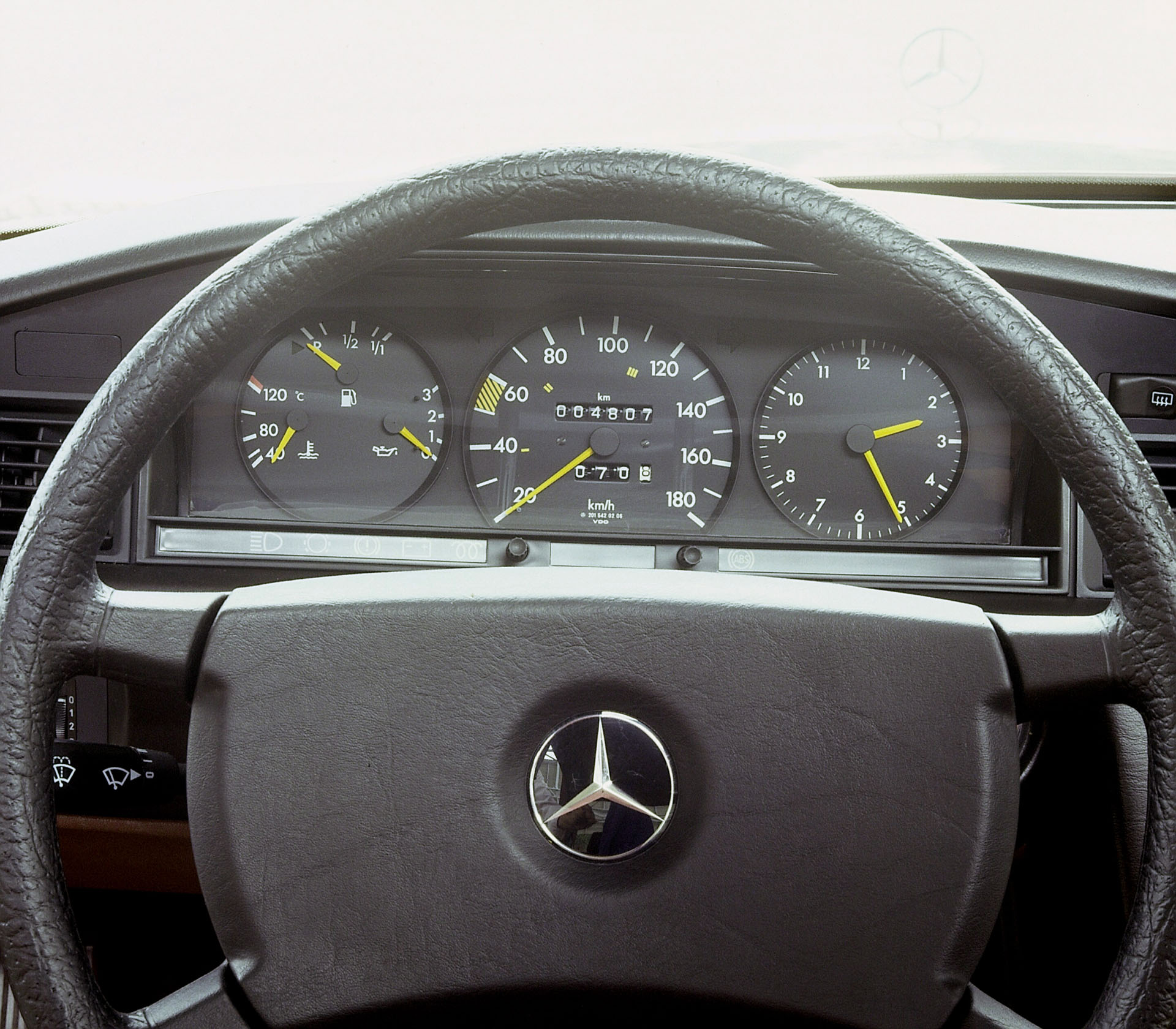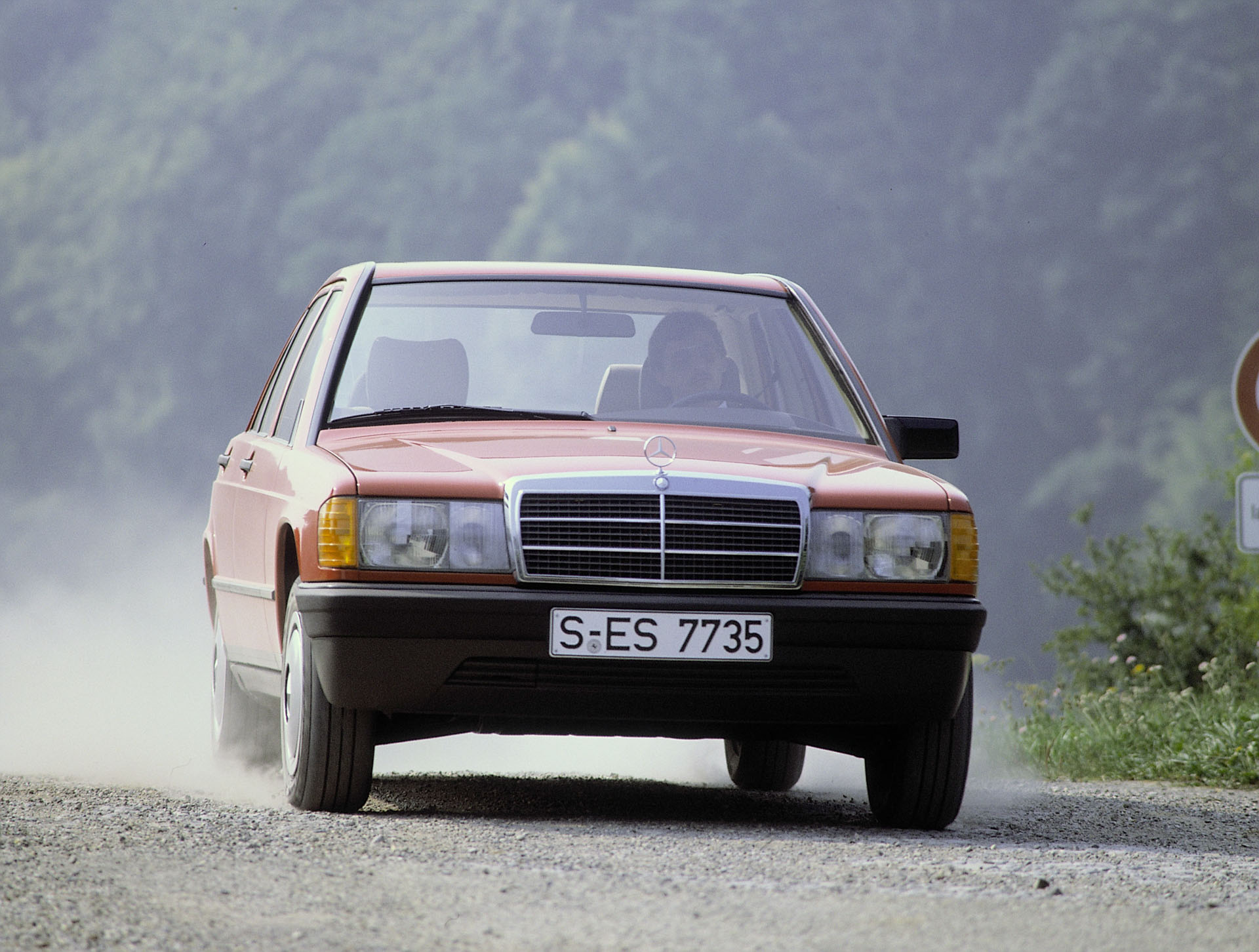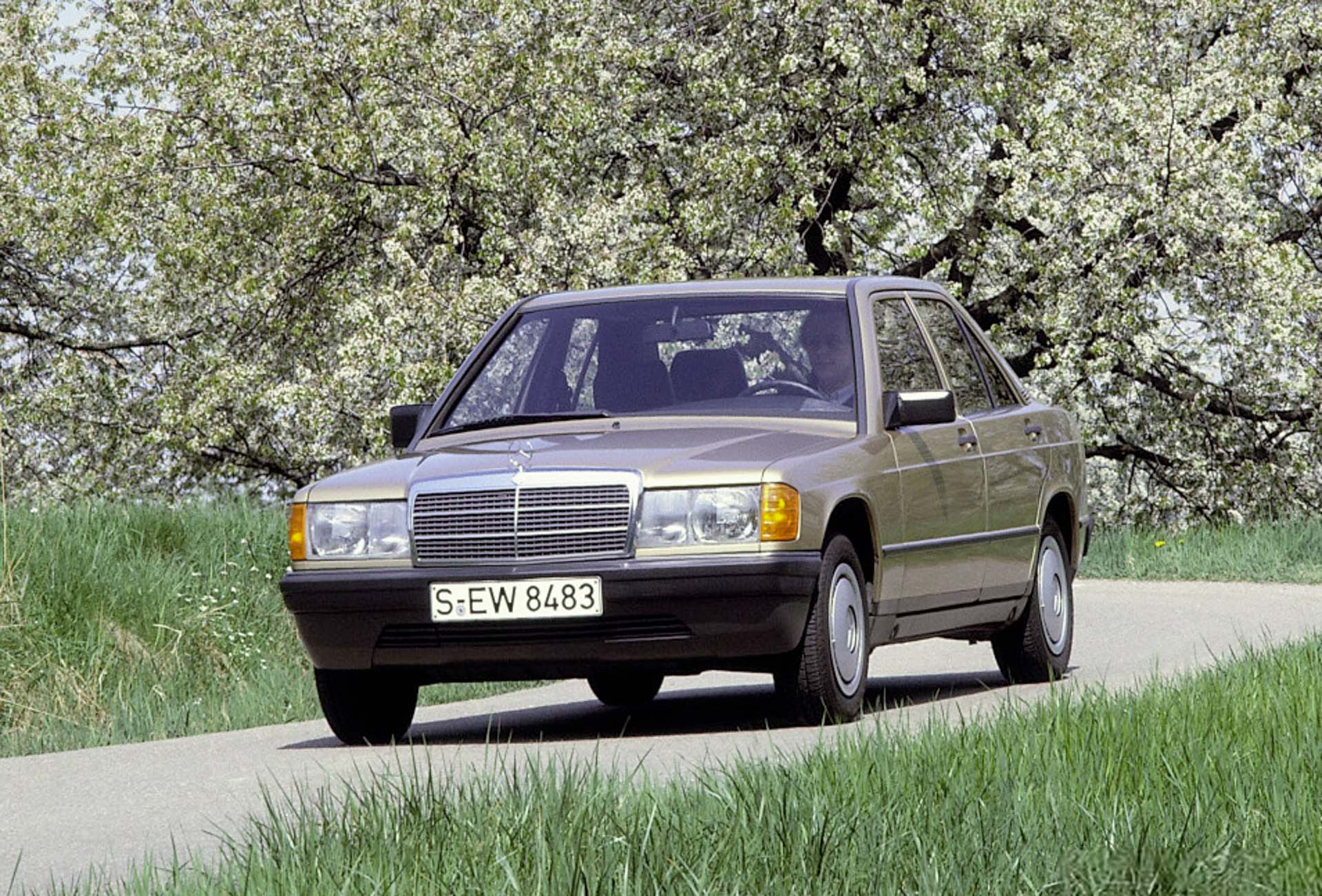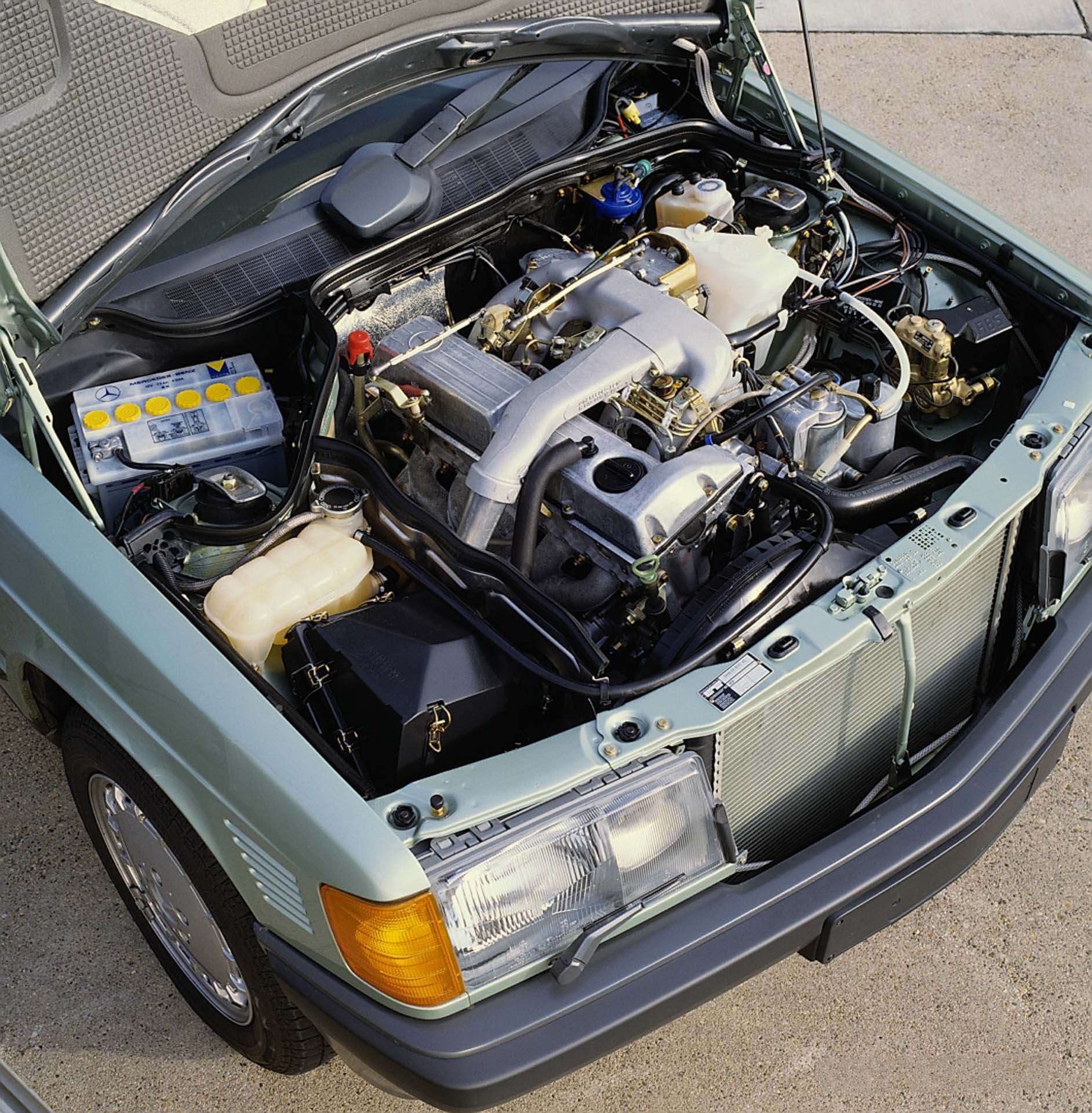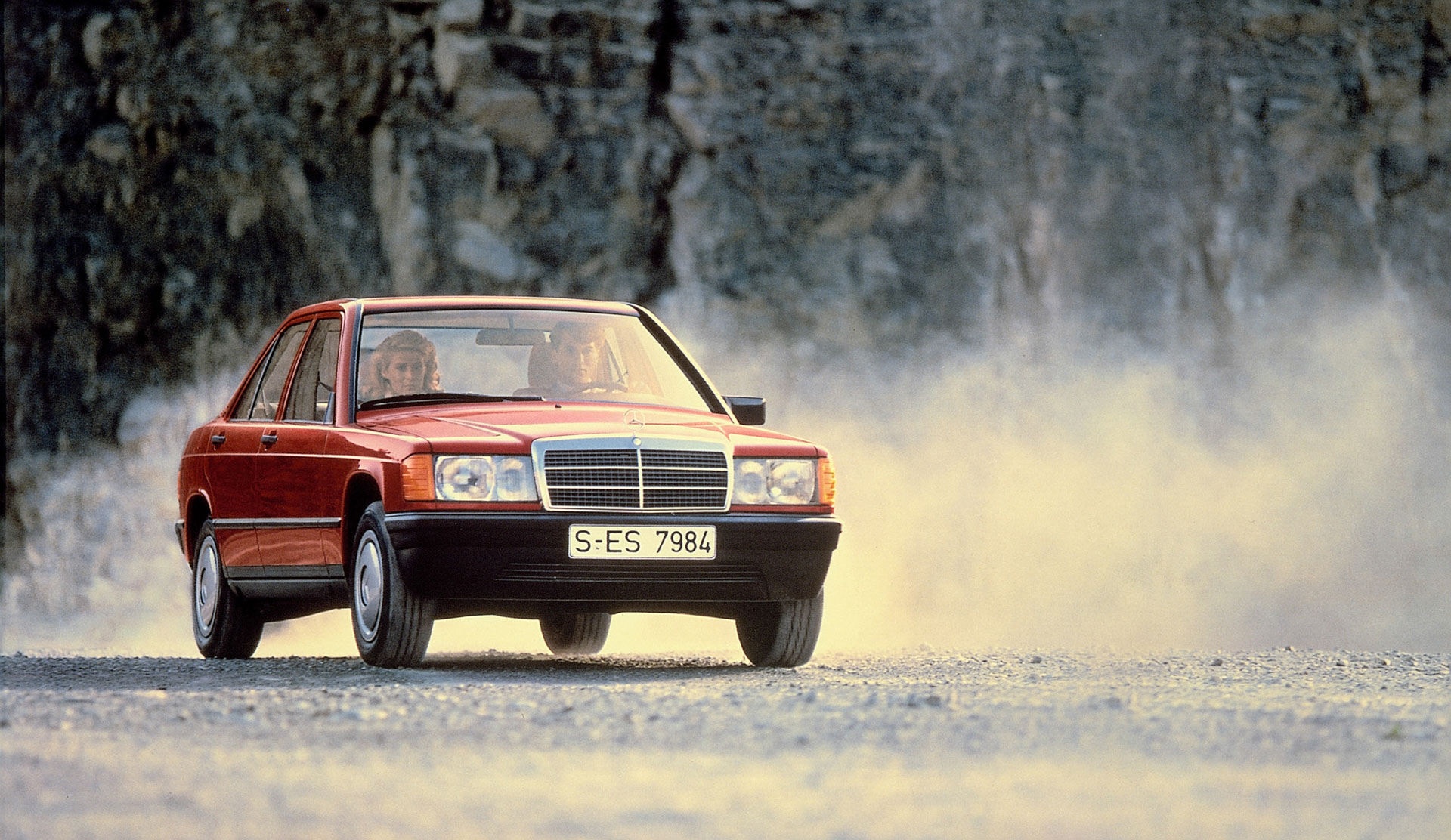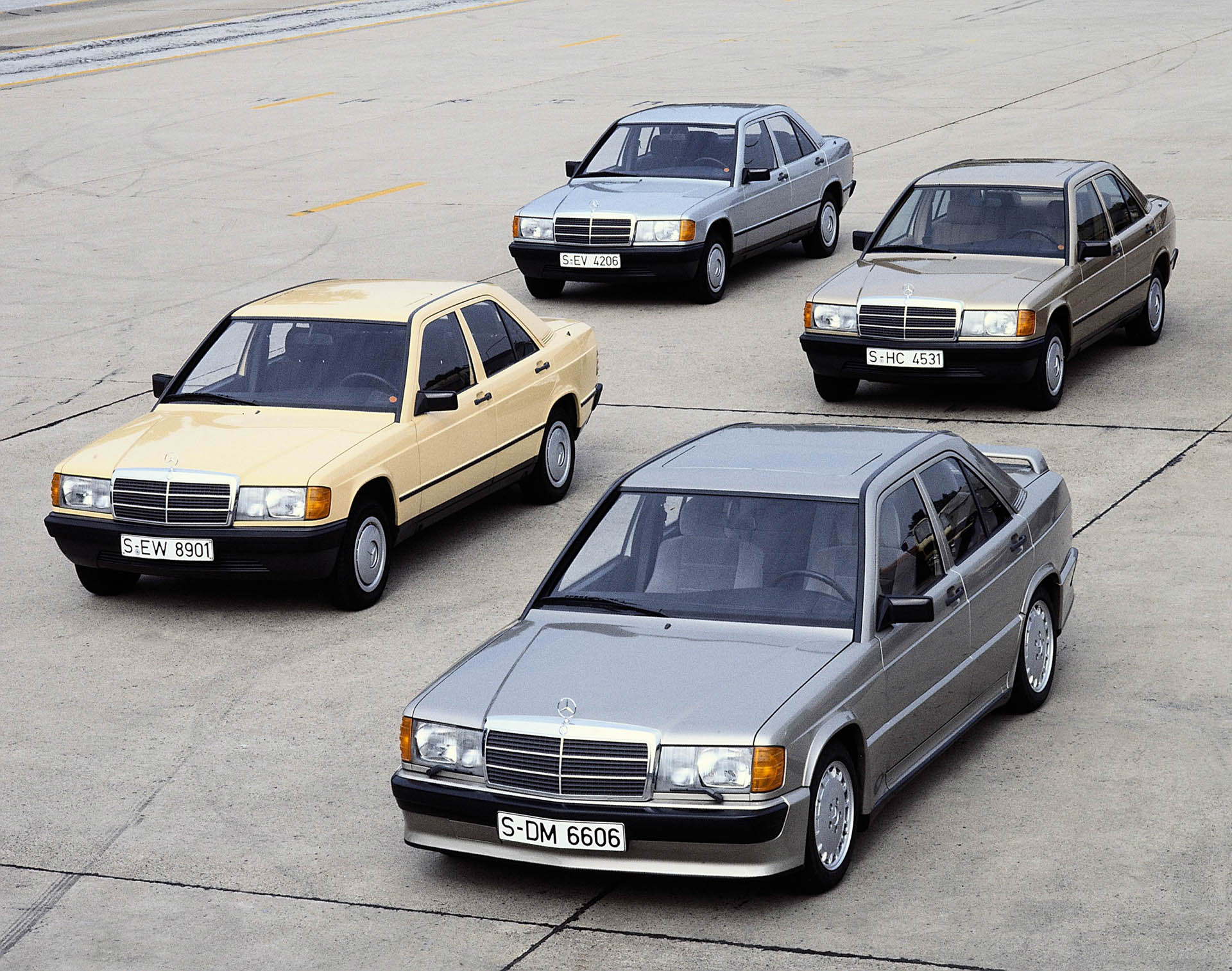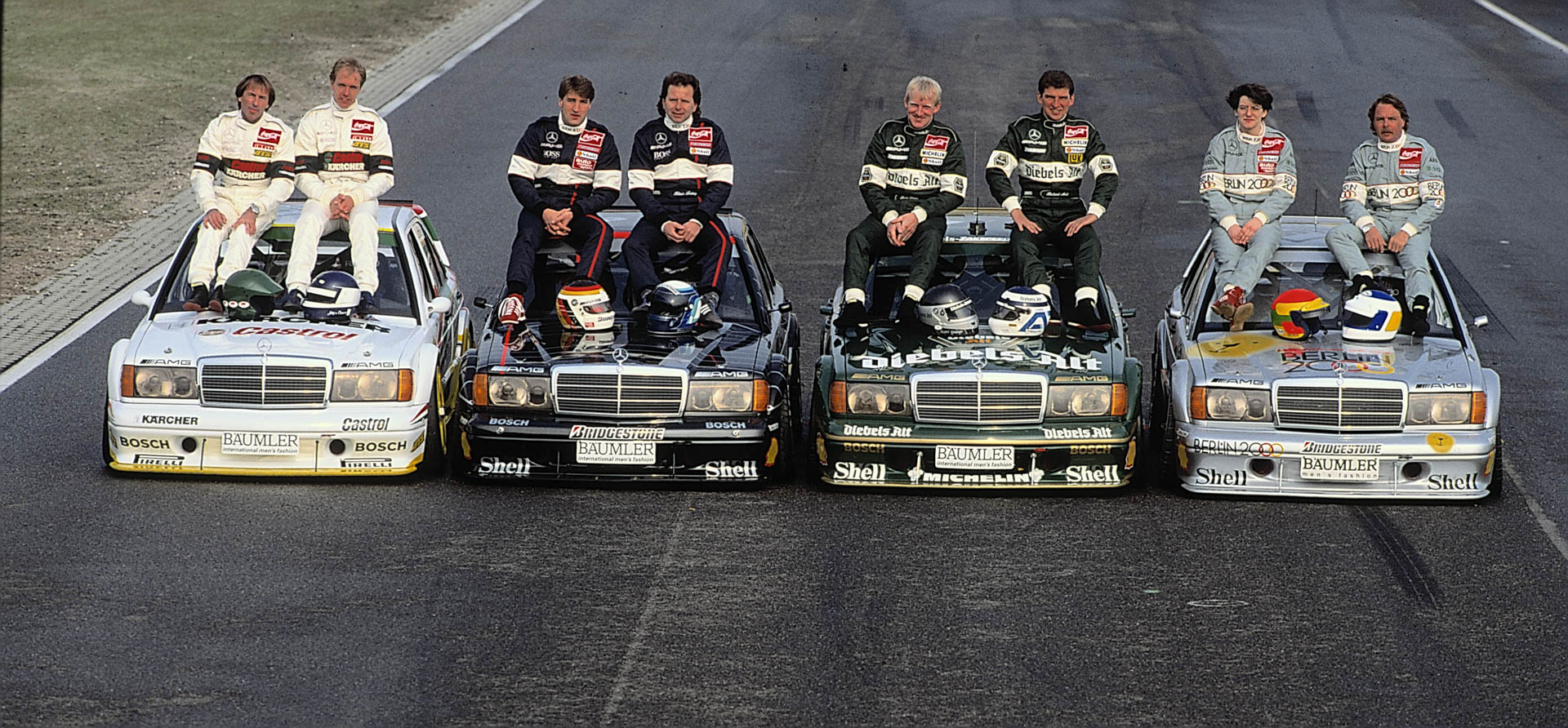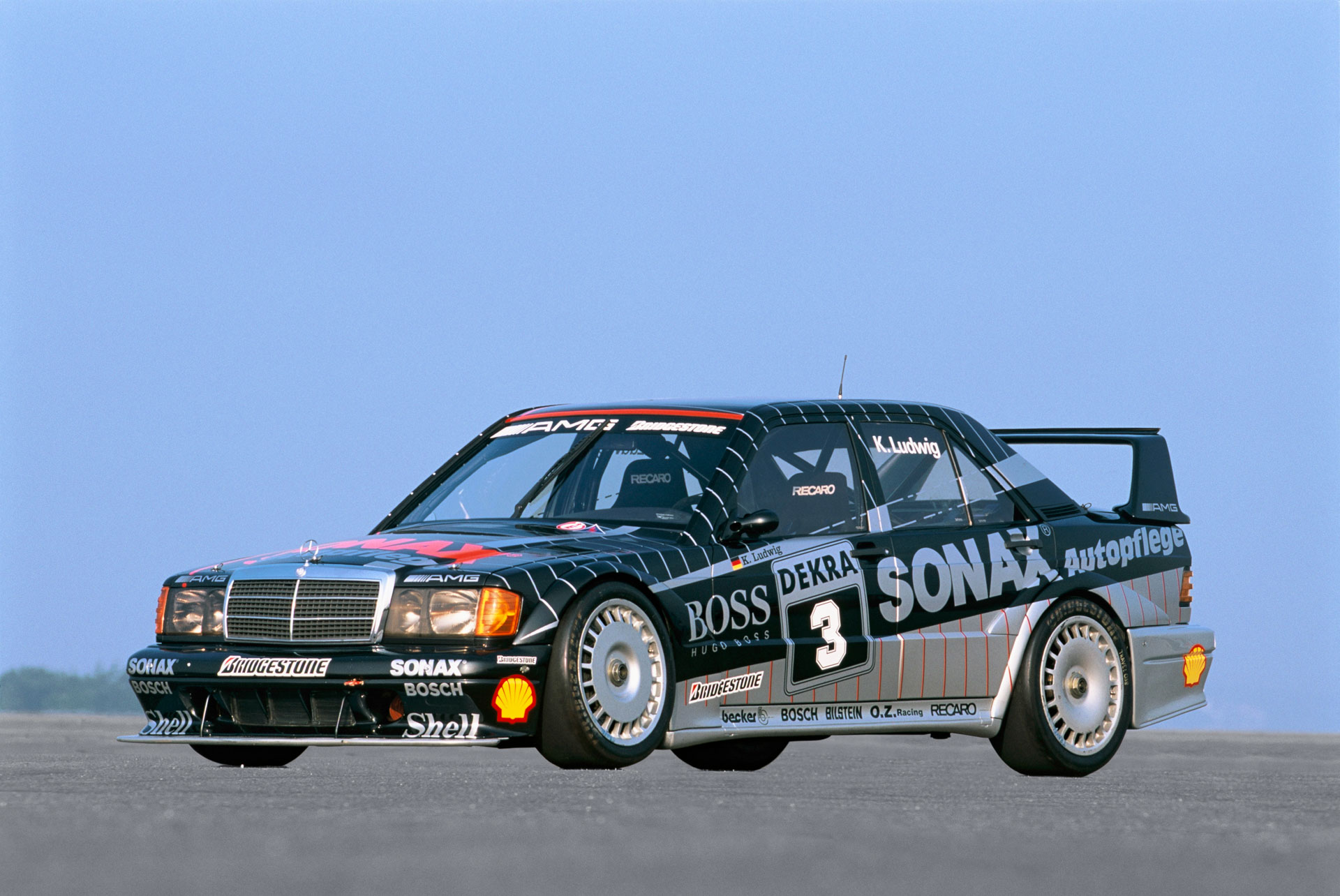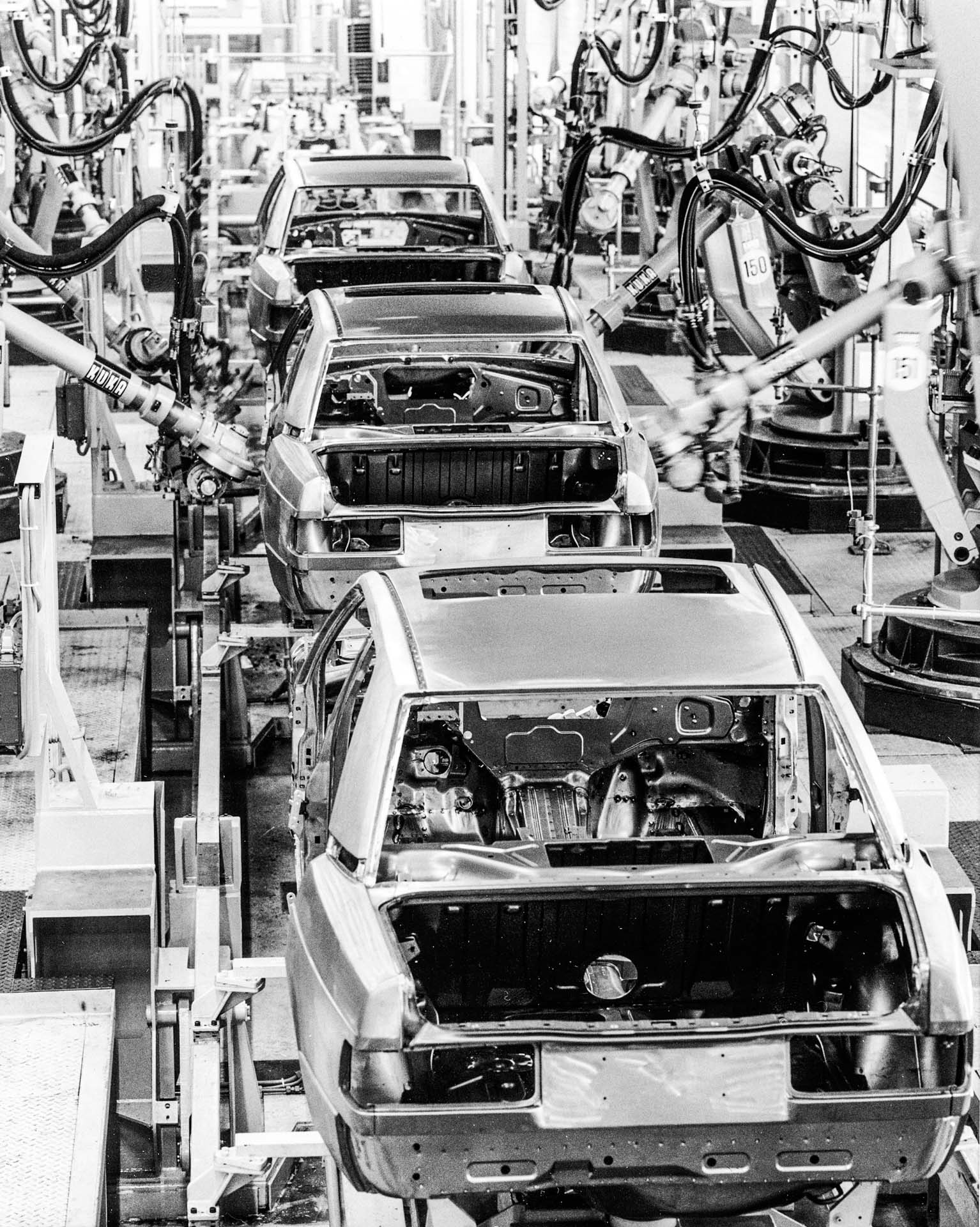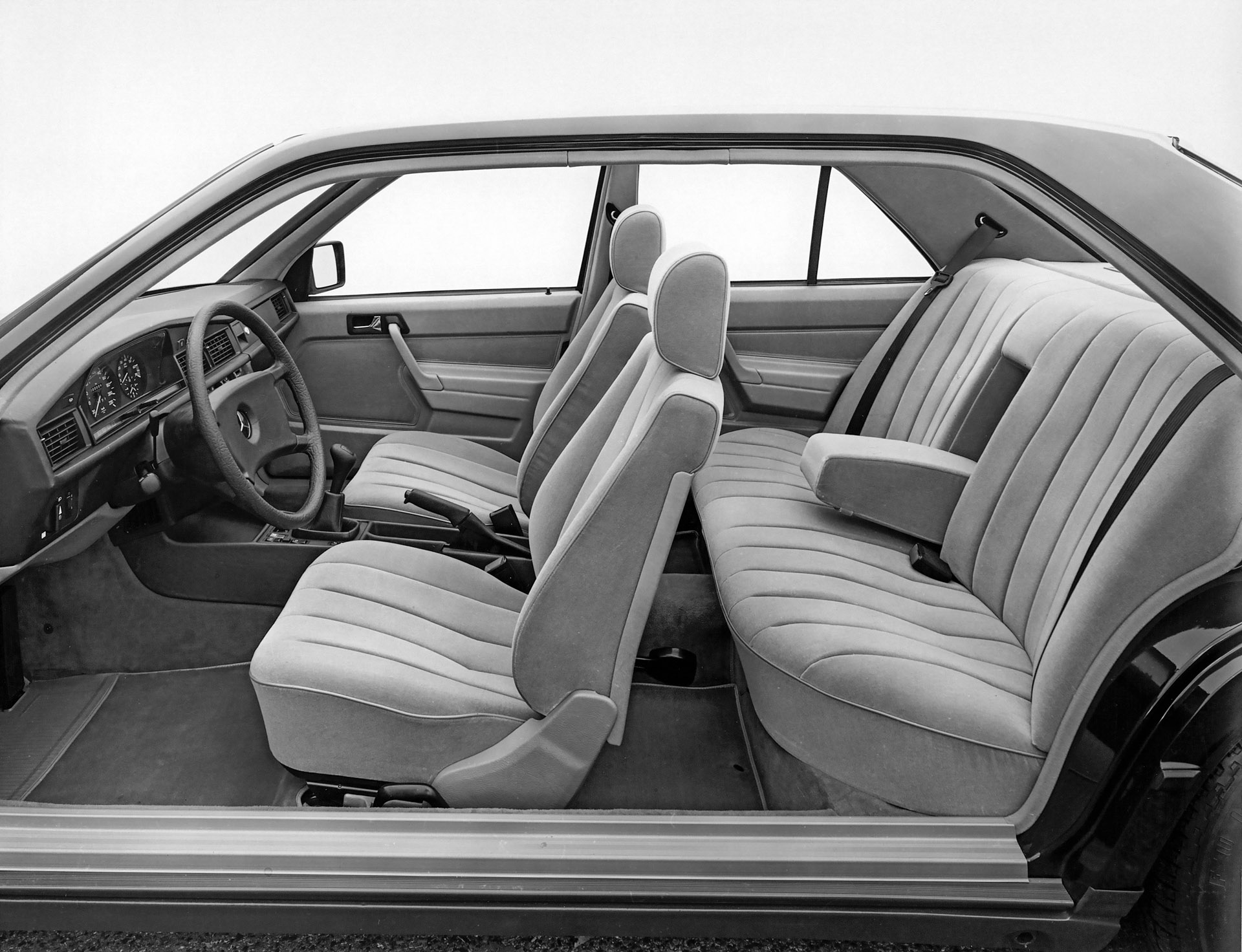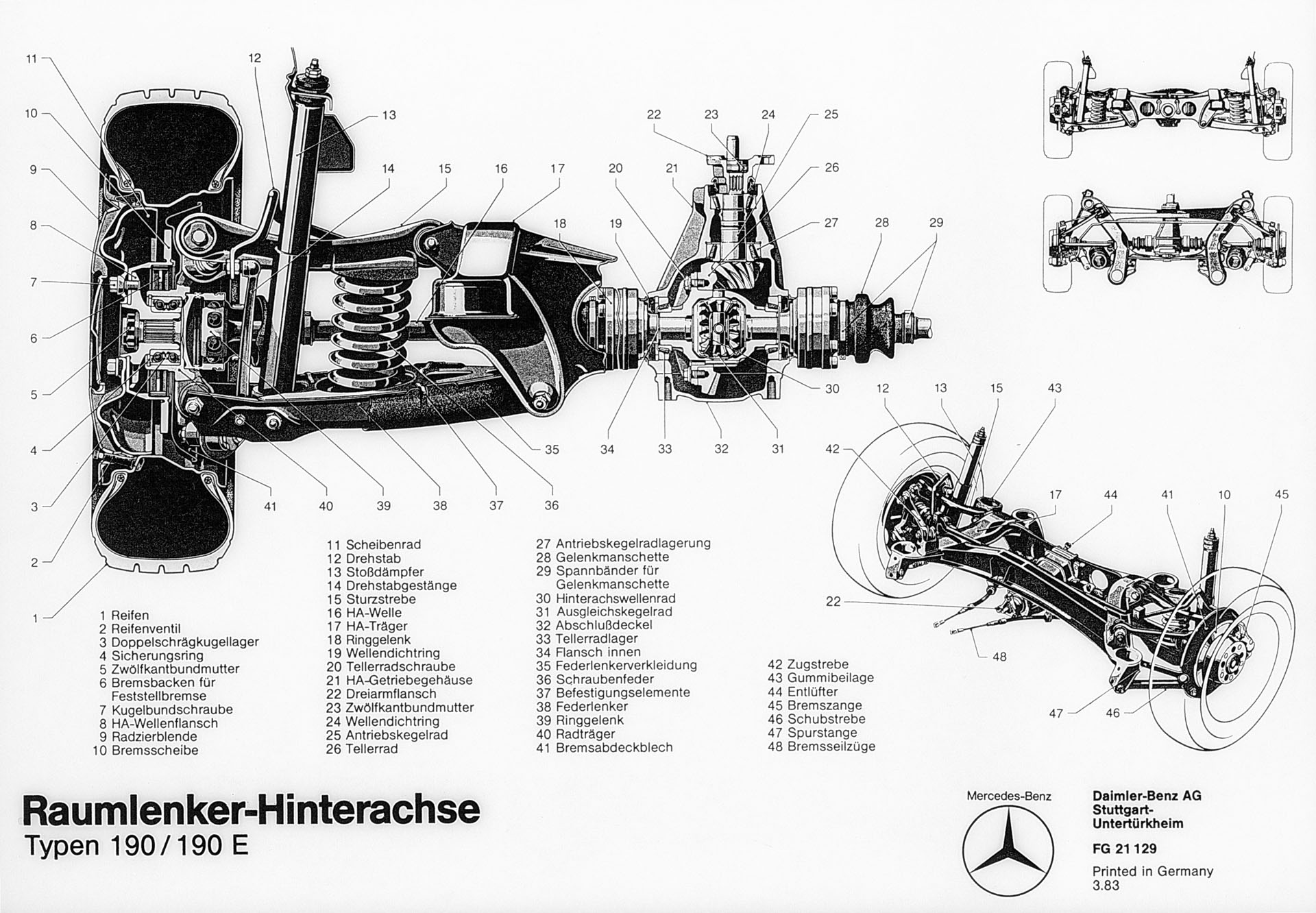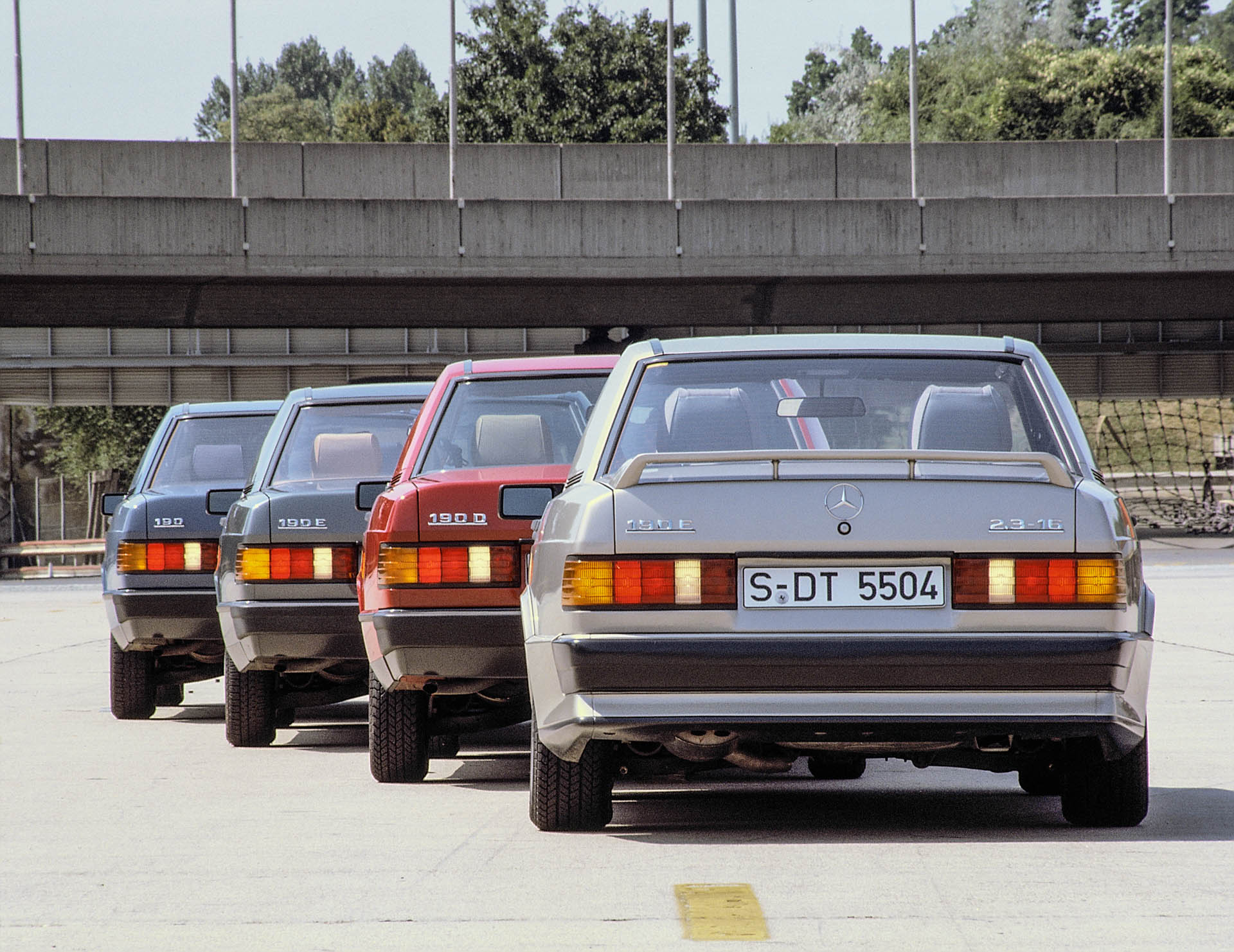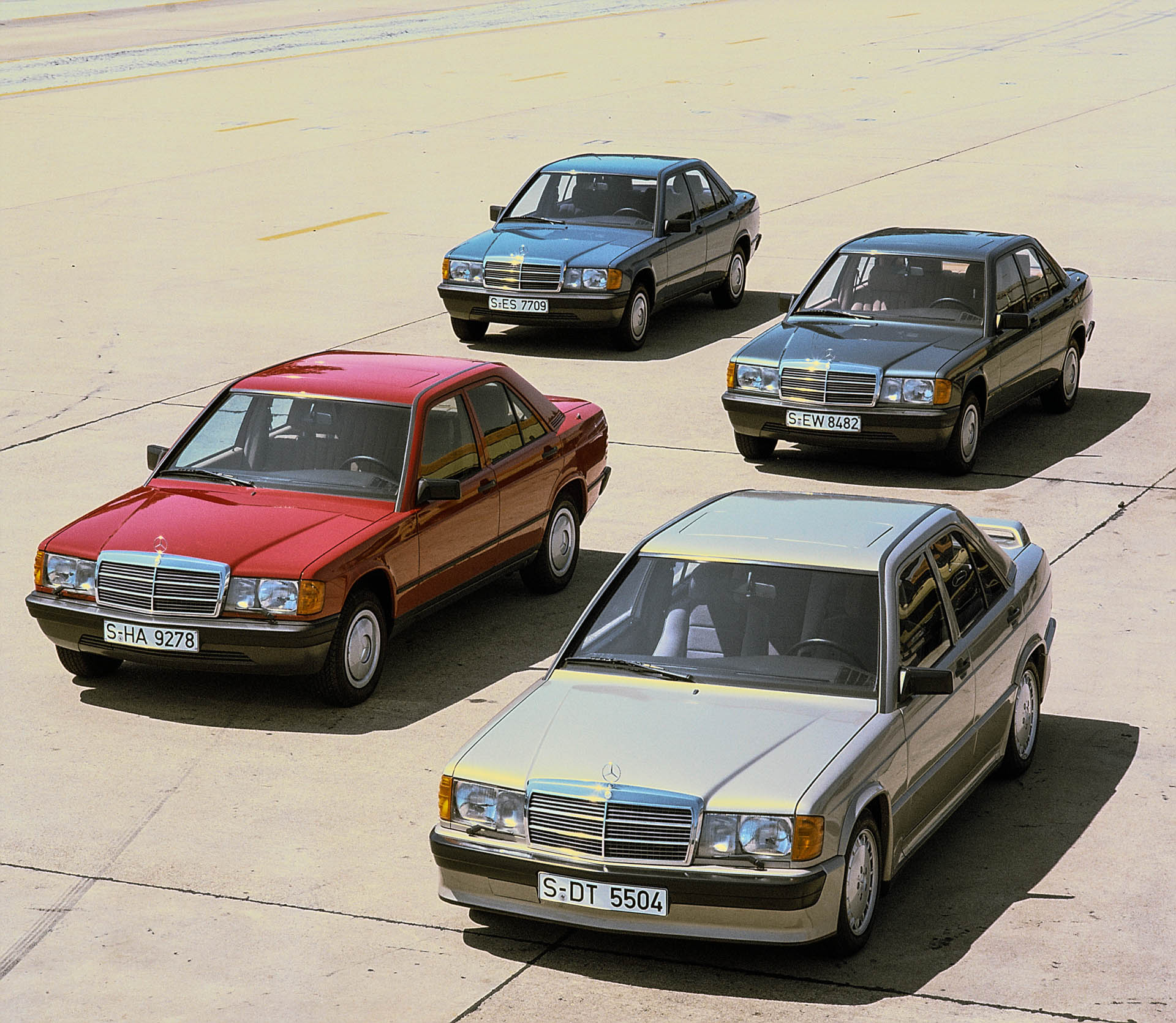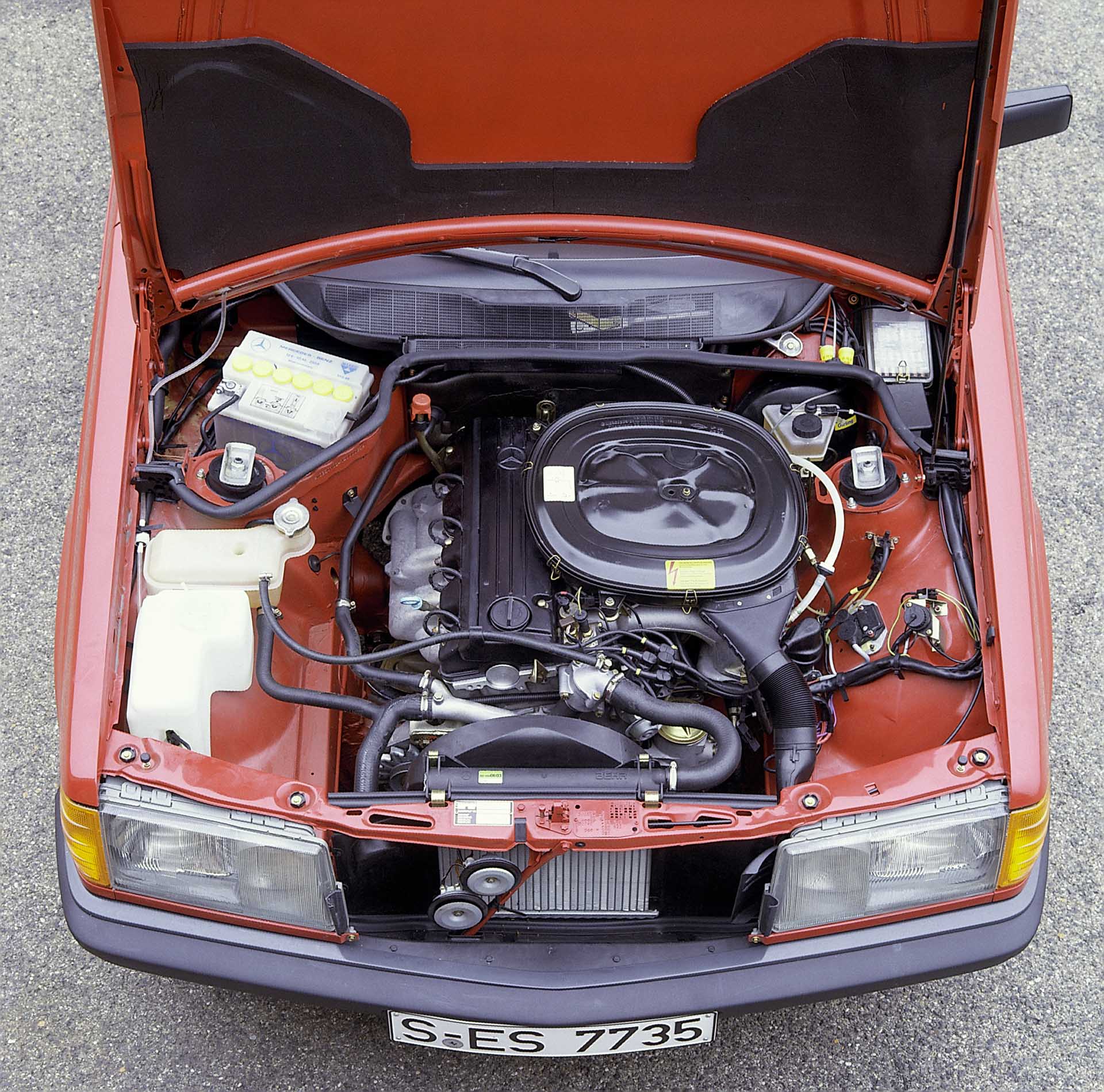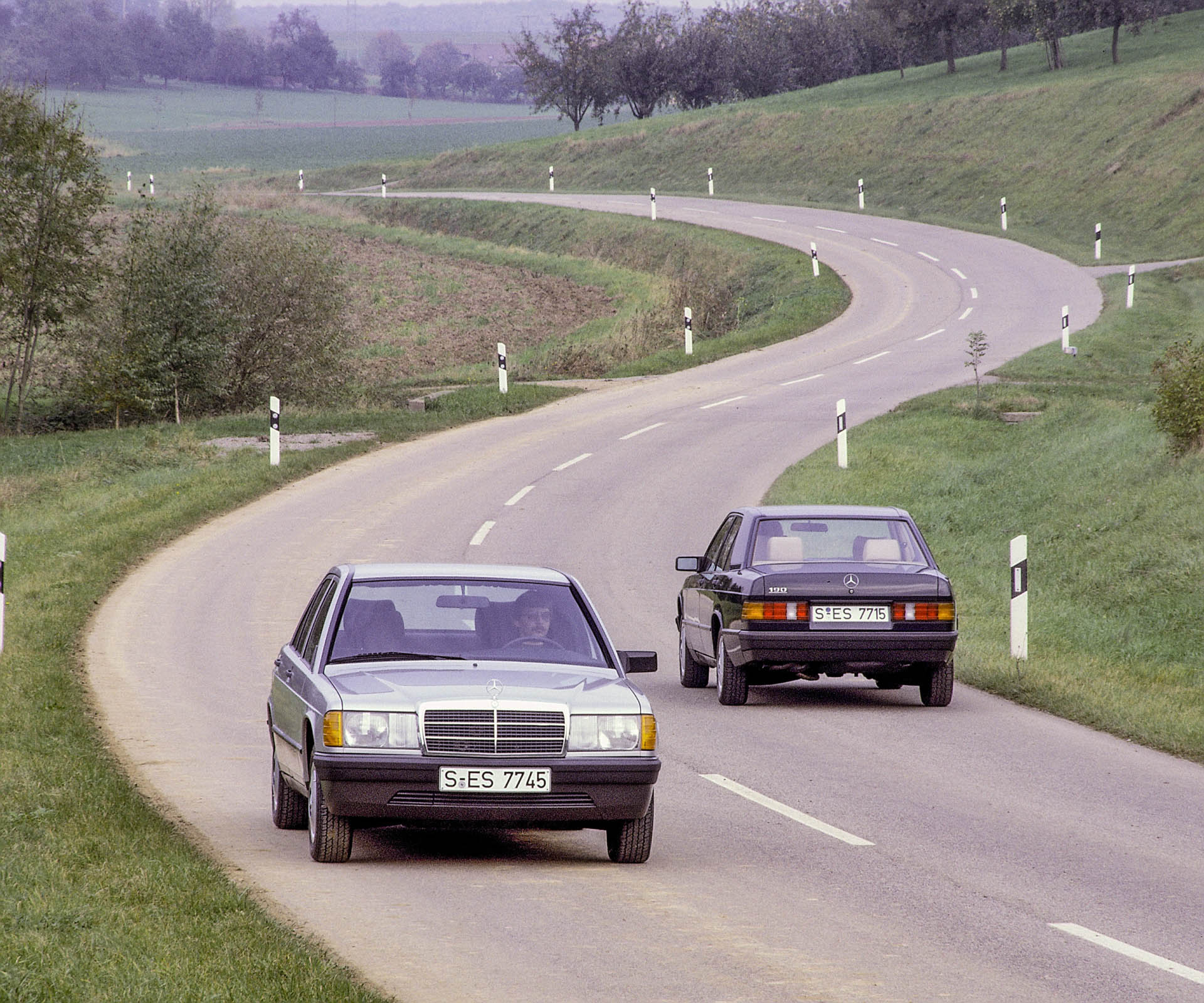Ask most people to name the definitive small sports sedan from the 1980s and they’ll almost certainly namecheck the second-generation BMW 3-series, codenamed E30, which just so happens to be celebrating its 40th birthday this year. But there’s another small, premium German sedan turning 40 in 2022, the W201 Mercedes 190, and it’s arguably even more important than the E30.
The E30 was, and still is, a great car, but it was also just a refinement of an existing idea. BMW had been in the small sports sedan space since the 1960s with the 02, and then had updated the concept with the launch of the first 3-Series in 1975, before doing it again with the E30 in 1982.
True, the E30 expanded the 3-Series range to include a four-door sedan, a proper convertible, a wagon and an all-wheel drive derivative, covering more bases than the 190 ever would. But before the 190 went on sale in late 1982 the idea of a small, vaguely affordable Mercedes didn’t exist.
Today, we take for granted that we can walk into a Mercedes dealer and drive out in a GLA or C-Class having only lost a sleeve, rather than an entire shirt in the transaction. But until the 190 arrived the least expensive new Benz was the equivalent of today’s E-Class, putting Mercedes motoring out of the reach of most average families. So the 190 isn’t only the precursor to the modern C-Class, but to every affordable Merc.
Driven: The 2022 Mercedes-Benz C 300 4Matic Offers S-Class Charisma For A Fraction Of The Price
But it wasn’t just the market positioning that made the 190 remarkable. Its design did too. Yes, it was a traditional three-box sedan with an equally traditional jumbo Mercedes radiator grille, but look at the laid back angle of that grille and the headlights, the way the nose and tail taper to make the car look smaller and less blocky. This, and the resulting 0.33 Cd figure was radical stuff for Mercedes, and didn’t BMW know it. The 190 made the BMW E30 rival released the same year look about 10 years older, and it can’t be a coincidence that the E36 3-Series that replaced the E30 in 1990 bears more than a passing resemblance to the 190.
The 190 also claimed superiority under the skin, at least in some areas. While the E30 stuck with simple semi-trailing arm rear suspension, Mercedes introduced an advanced multi-link rear end, which worked like a double-wishbone setup but with added toe control. Again, it’s something we take for granted today, but it wasn’t found on any of the more expensive Mercedes cars at the time, and BMW didn’t start using the tech until the 1989 Z1 roadster and E36 3-Series (the 1993 E36 Compact cheaped-out with the old semi-trailing arm setup).
The 190 wasn’t perfect, of course. It’s hard to decide which was meaner, the rear legroom or the list of standard equipment, there was no six-cylinder option until 1985 and the early 72 hp (72 PS) naturally aspirated European-market diesel was glacially slow (0-60 mph / 96 km/h in 17.7 seconds), though it did have an innovative sound-deadening package above and below it that gained it the probably generous nickname “whispering diesel.”
Mercedes also missed out on potential sales by having no two-door variant or convertible, though it did appear to have considered a hatchback at one point, and even got as far as building some prototypes. And its plans to go rallying were demolished by the arrival of the all-wheel drive Audi Quattro, while the hot 16-valve 190 struggled to get ahead of its BMW M3 rival in touring car racing until the winged 190E 2.5 Evolution II finally claimed the DTM Championship in 1992.
The E30 also outsold the 190, shifting around 2.3 million units to the Merc’s 1.8 million, though that’s not really surprising given how many more body and engine combinations were available to BMW buyers. Both the E30 and 190 were incredibly important cars, but we can’t help thinking that the Mercedes deserves a little more appreciation.
And not just the fast ones, but the regular models people actually bought in huge numbers. While the Cosworth-tuned 190s get plenty of love, the ordinary 2.0-liter cars, machines that brought Mercedes quality and solidity within reach of ordinary drivers for the first time, and pushed BMW to really up its game for the E36 that came next, deserve more respect. The next time you pass any sub-E-class Mercedes, whether it’s an A-Class, GLA, C-Class or GLC, you’re looking at a car that wouldn’t exist if the the 190 hadn’t paved the way.




